
Volume 13: Issue 3 Fall/Winter 2022
FAANP Chair 1
FAANP FORUM Chair 2
Happy Birthday, Lee 3-4
Leadership 5-6
What to Read Now 7-8
Education 9-10
Policy 11-12
History 13
Art and Creativity 14-15
FAANP Business Mtg 16-18
Member Profiles 19-29
What’s Happening Now 30
Announcements 31-32
FAANP Committees 33
Newsletter Committee 34
Inside this Issue:
The purpose of the AANP Fellows Program, in support of the mission and vision of the AANP, is to
impact national and global health by engaging recognized nurse practitioner leaders who make
outstanding contributions to clinical practice, research, education or policy.
Fall/Winter 2022
My first few months as FAANP Chair have been
both exciting and illuminating! I wish to formally invite
you to attend the 2023 Winter Meeting at the beautiful
Lowes, Ventana Canyon Resort in Tucson, Arizona. The
meeting will be held on February 24
th
- 25
th
, 2023 and
offers an unique opportunity to hear and interact with
some of the most respected national experts on the topics
of: healthcare workforce, economics, regulation, policy,
leadership, and emerging models of healthcare delivery.
The selected theme for this year’s meeting is: Navigating the Changing
Face of Healthcare: Emerging Models, Challenges, and Strategies. Our spec-
tacular speaker lineup features; Jeff Bauer, Barbara Safriet, Peter Buerhaus, Cathy
Rick, Christine Engstrom and the 2022 Loretta C. Ford Award recipient, Dr. William
Rosa. You will leave the meeting feeling refreshed and energized with strategies as
well as a call to action for the relentless pursuit of improved access to healthcare, the
future healthcare systems, and the role of the NP in emerging models of healthcare
delivery. Continuing education credit will be offered for attending this event.
Relax, Reconnect and Recharge at this amazing event!
See you in Tucson!
A Very Merry Christmas
and Best Wishes for the
New Year!
Greetings from FAANP Chair
Penny Kaye Jensen, FAANP
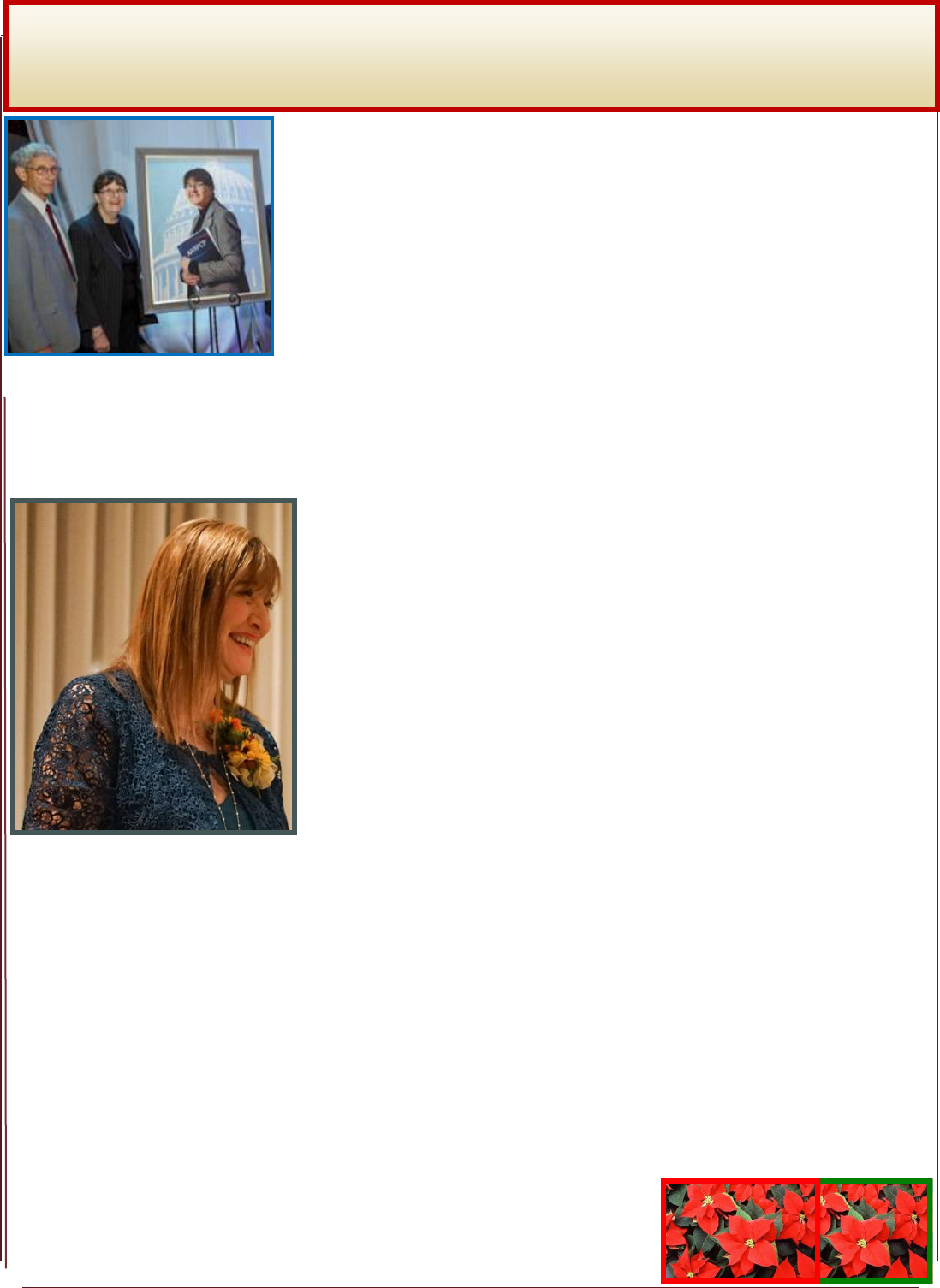
2 Volume 13: Issue 3 Fall/Winter 2022
Sending Condolences, Love and Prayers to Dr. Jan Towers
From all Nurse Practitioners to Jan and her family in the loss of her husband.
“Barry Towers had great impact on AANP’s development and growth. When AANP
was “young”, Judith Dempster, Jan Towers, and Zo DeMarchi made up the execu-
tive staff—and each of their husbands was VERY instrumental in getting the busi-
ness of AANP done. But long after AANP’s staff and membership had greatly ex-
panded, Barry Towers continued to support AANP in many ways. He assisted in a
range of administrative activities in the early days of the AANP Certification Pro-
gram and JAANP. He was the official photographer for conferences and meetings
for years, including all FAANP inductions and events. He was a major asset in Health Policy Office work. We owe
Barry a great debt of gratitude for his dedication and contributions to AANP over the years.” (Mary Jo Goolsby)
Barry died on November 22. Please, remember Jan and Barry in your prayers.
*********
As I attempt to choose appropriate words, I am experiencing sad and
happy thoughts and this column may reflect those emotions. This is my last
column as chair of the FAANP Forum committee and am feeling a true loss af-
ter twelve years on this committee and eleven as chair. I resigned a year ago
with the intention of ending my office in December of 2022 and had hoped a
plan for continuation would be in place. I do not know the future plans. As
chair of this committee I began my journey and continued it with Patricia
Alpert, Mary Jo Goolsby, and Jamie Newland. Mary Jo as the person who ini-
tiated this Newsletter has remained on the committee, has published frequent-
ly, been loyal to all endeavors, and has been a great supporter. Patricia Alpert
and Jamie Newland have also been frequent publishers, loyal, and supportive.
Over the years various people joined our team including Rosemary Goodyear
and the chairs of FAANP during their terms. Our most recent team members
have included Barbara Sheer, Kim Curry, and Deborah Gray all of whom have
been dedicated to fulfilling their roles. Over the years, Ric Riccardi has con-
tributed many photographs and his recent column: Art and Creativity. Jeff
Bauer, an Honorary Fellow contributed so many valuable columns and we loved his contributions. Thank you to
Blanca Gonzales for her courtesies, suggestions, and promptness. All of these Fellows have been fantastic team
members, friends, and supporters of the NL. Without them, the FAANP Forum would not have been the News-
letter that it is. My heart is full of gratitude and love for these wonderful people who were so willing to share their
time and talents. I am glad we have the Forum online and believe that it does play a part in our history. Mary Jo,
thank you for your strengths in forming this committee in 2010 and for the expert guidance over the years. Your
awesome personal assistance to me was just what I needed and I am deeply grateful. The rewards and experiences
with which I have continued to chair the Forum have been outstanding. The Fellows I have met and with whom I
have had many discussions proved over and over the unbelievable value of the Fellows. Thank you to the commit-
tee members, the readers, the chairs of FAANP, and my friends who accompanied and supported me on this jour-
ney. It was a privilege and an honor to serve as chair of the FAANP Forum committee. The rewards were many
and I learned so much about editing, proofing, and publishing. It was an honor to work with so many intelligent,
interesting, creative people. Thank you to each of the FAANP chairs who allowed me to continue in this role. I
treasure this experience and challenge as one of the best I have ever known and
will long remember many stories about the FAANP Forum. Merry Christmas
and Happy New Year. Best wishes for 2023.
Greetings from FAANP Forum Chair
Mary B. Neiheisel, FAANP
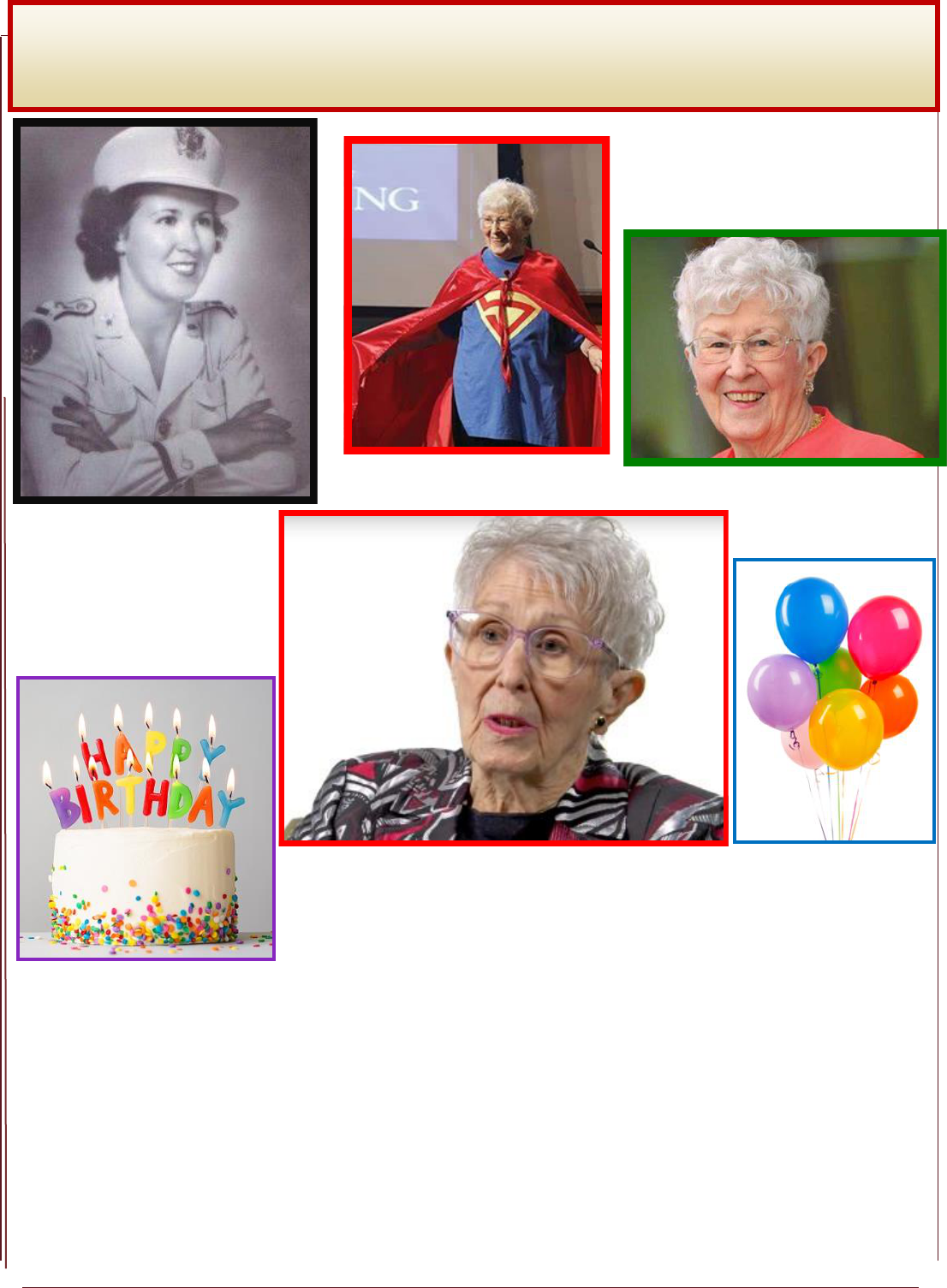
3 Volume 13: Issue 3 Fall/Winter 2022
HAPPY 102nd BIRTHDAY TO DR. LEE FORD
HAPPY BIRTHDAY TO
DR. LORETTA FORD,
THE FOUNDER OF THE
NURSE PRACTITIONER PROFESSION
WITH GREAT GRATITUDE AND LOVE
From FAANPs all over the world.
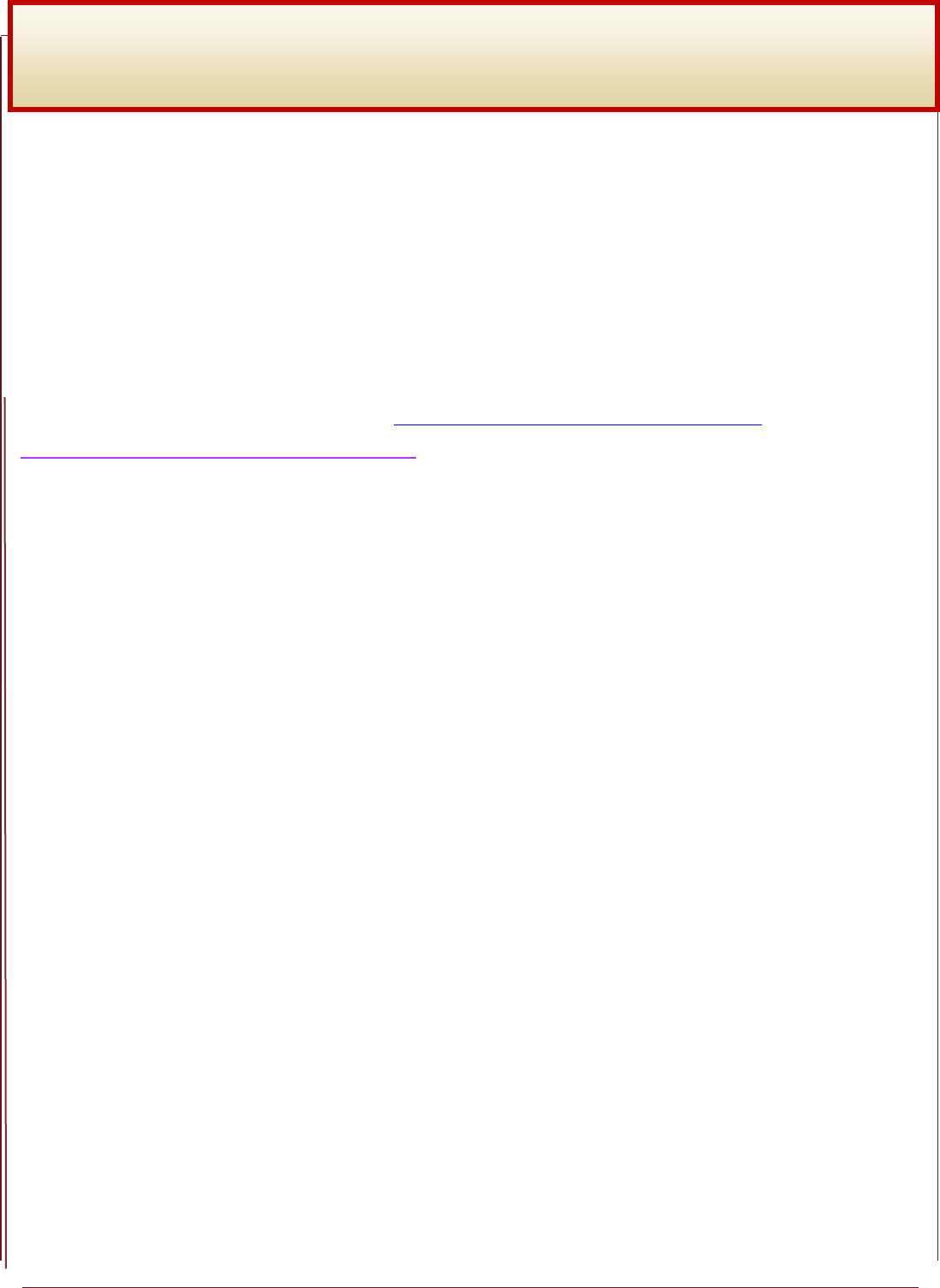
4 Volume 13: Issue 3 Fall/Winter 2022
In recognition of Nurse Practitioner Week, the Department of Veterans Affairs recognized World War II
Veteran and internationally renowned nursing leader who transformed the profession of nursing by co-founding the
nurse practitioner profession, Dr. Loretta C. Ford. Ford served her country as a nurse in the United States Army
Air Force, working at several stateside military bases before returning to school to attain her college degree at the
University of Colorado. Dr. Ford, now approaching her 102nd birthday, is known as the ‘mother of nurse practi-
tioners’ and remains an active member of the American Association of Nurse Practitioners, serving as a consultant
and providing inspiring lectures. Dr. Ford is the author of more than 100 publications and holds many honorary
Doctoral degrees. Dr. Ford’s many awards include the Living Legend Award from the American Academy of
Nursing, the Gustav O. Lienhard Award from the Institute of Medicine of the National Academies, induction into
the National Women’s Hall of Fame and the Lifetime Achievement Award from the American Association of Nurse
Practitioners. Today, the Department of Veterans Affairs employees over 7,000 nurse practitioners, each proudly
serving America’s heroes. To hear Dr. Ford in her own words, describing her experiences in leading the development
of the nurse practitioner profession, click here: Nurse Practitioners - The Legacy of Loretta Ford
https://www.youtube.com/watch?v=yX2-GPVXx3o Penny Jensen
Dr. Lee Ford has been a nurse for eighty years and 57 of those years have been dedicated to starting and
building the Nurse Practitioner profession. She is an amazing woman who has witnessed so many changes and im-
provements in health care. She has earned and received many prestigious awards. In the 21st century alone, she
received the following awards:
2000- Honorary Doctor of Science, University of Rochester
2000 NAPNAP-LCF Distinguished Fellow Award established
2000 Fellow, AANP
2001 Honorary Fellow Alpha Omega Alpha, Honor Medical Society
2001 Honorary Doctor of Humane Letters, Binghamton University
2001 Honorary Fellow American Academy of Nurse Practitioner Trailblazer’s Award, American College of
Nurse Practitioners
2003- Elizabeth Blackwell, MD Award, Hobart and William Smith Colleges
2004-National Conference of Nurse Practitioners Life Achievement Award
2005-“Amazing Exemplars” Award, Friends of National Institutes of Nursing Research
2006-Loretta C. Ford Educational Wing dedicated at University of Rochester School of Nursing
2006- “Second Century Excellence in Health Care” award from Columbia University School of Nursing
2007-Honorary Doctor of Science, Indiana State University, Terre Haute, IN
2008-Lifetime Achievement Award, Convenient Care Clinic Ass’n, Orlando, FL
2010-Lifetime Achievement Award, CANP, LA, CA
2010-Lifetime Achievement AWARD, National Nurse Community Centers
2010-The Princess Srinagarindra Award, Thailand
2011-Induction into the National Women’s Hall of Fame, Seneca Falls, NY
2012-Induction into the Colorado Women’s Hall of Fame, Denver, CO
2012 Honorary Doctor of Science, Medical University of South Carolina, Charleston
2012 AACN Gannet Award, Wash. DC
2014 NONPF Lifetime Achievement award
2014 AAACA Pioneering Spirit Award
2014 West Palm Beach NP Ass’n Leadership Award
2016-Honorary Doctor of Nursing Pracce, University of South Florida, Tampa
2016. “Growing Bolder”, Central FL. Community Service Award , Winter Park, FL
2018 NONPF Lifetime Achievement Award
2020 FAANP Legacy Award
Dr. Loretta Ford, Congratulations on your many accomplishments and on your 102nd Birthday.
A TRIBUTE FOR DR. LEE FORD
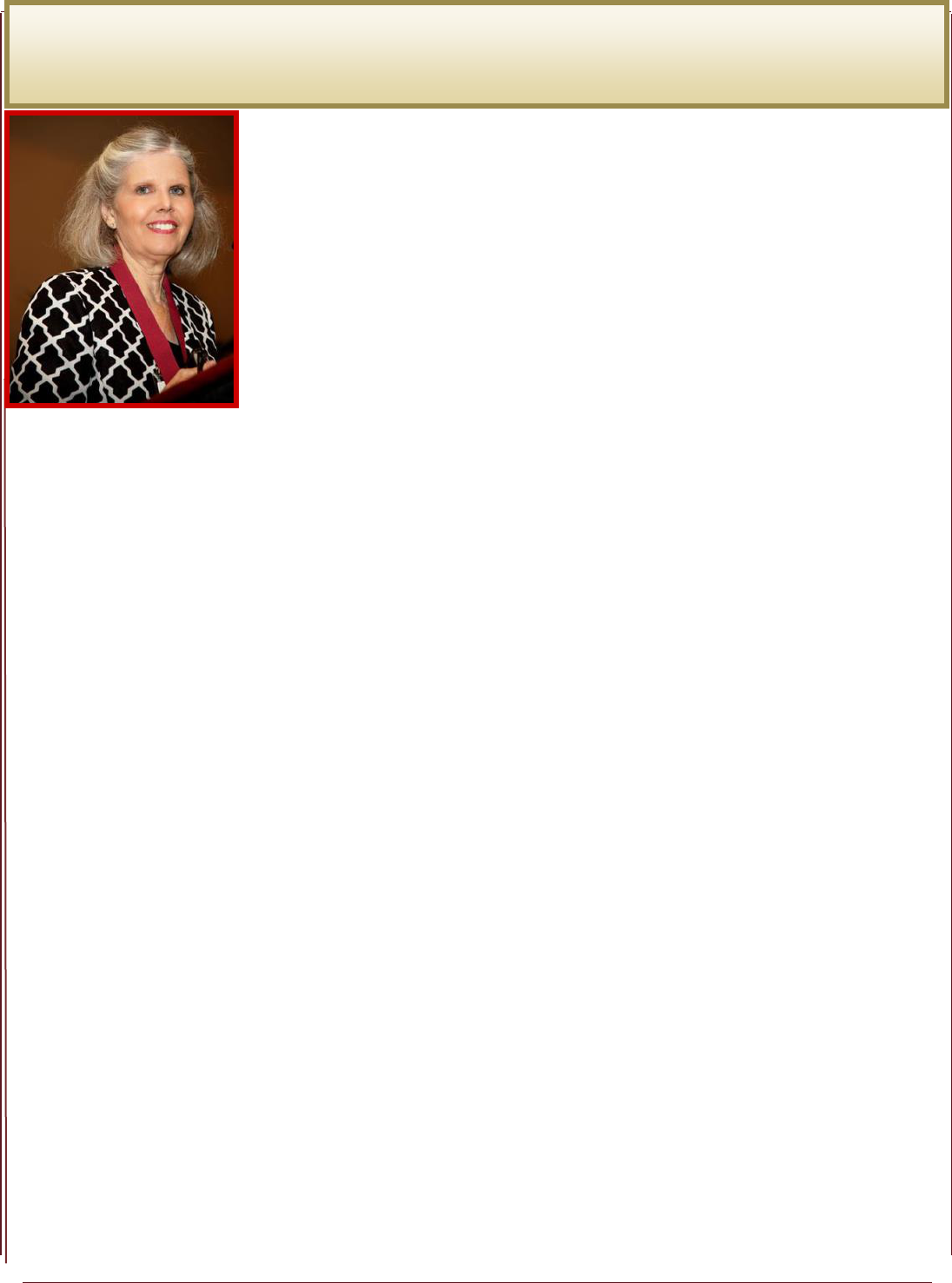
5 Volume 13: Issue 3 Fall/Winter 2022
Leadership
Mary Jo Goolsby, FAANP
Give It a Try—Leadership Book Club Dinner
I recently had dinner with four local NP leaders as we participated in our first
“leadership book club dinner”. When I put out a call to determine interest, I expected
to attract a small number of participants, which would allow us to effectively discuss
one book over dinner. That is precisely the response I received, and we scheduled our
first dinner one month later. As the facilitator, I chose a book that I believed had a
meaningful and inspirational message and was an easy enough read to be promising for
this purpose. The choice, for me, clear---Seth Godin’s What to Do When It’s Your Turn
(and It’s Always Your Turn) (2014).
In What to Do, Godin shares his belief that each of us has the freedom to make
choices, which bring risks and responsibilities. He talks about seizing our opportunities,
rather than waiting to be invited to participate. By making and ACTING on our
choice, we learn that having the necessary courage to act enables us to make a difference.
What a lively discussion this book triggered! As we began our discussion, one participant, an NP faculty
member, described having already cited Godin’s message twice that day in encouraging a former and a current
student. Each of us could recognize the opportunities that came with his message—for ourselves and for those we
influence.
Yet, we also acknowledged the potential impediments with which we all are faced daily, constant distrac-
tions from our existing commitments which we often allowed to stand in our way. This immediately reminded me
of T.S. Eliot’s poem —Burned Norton, published in 1936. Eliot describes time past and time future as allowing us
little consciousness, describing “time-ridden faces Distracted from distraction by distraction. . .” What a perfect de-
scription for the hustle-bustle world in which we exist, almost 90 years later!
So, what did I learn from the experience? We didn’t solve all the world’s problems, or even our own. How-
ever, having a shared perspective over which we could talk was successful in inspiring us to discuss the book and,
more importantly, our gained insight. And our number allowed all to be present and participate—so that we had a
somewhat intimate discussion amid a busy restaurant.
As we prepared to leave, all shared interest in planning our next event. I had brought three other books I
was currently reading, just in case the conversation had lagged. While they were not needed, I briefly described
Sparked: Discover Your Unique Imprint for Work that Makes You Come Alive (Fields, 2021) and what I learned by
completing Fields’ Sparketype test online. They were interested in this content—since they each wanted to com-
plete the Sparketype test, we chose that book (and/or his resources) for our next leadership book club dinner. Dur-
ing the second month, another member joined, and our discussion and fellowship was just as lively as before.
We’re going to pick it up again in January!
I strongly recommend hosting a book club dinner as a way of encouraging peer mentorship and profession-
al development among a small number of participants, who can use the learnings to then influence others and/or
their institutions. I’d love to hear from anyone who is participating in a similar group or has ideas on how this
could be extended.
References
Fields, J. (2021). Sparked: Discover Your Unique Imprint for Work that Makes You Come Alive. HarperCollins
Leadership.
Godin, S. (2014). What to Do When It’s Your Turn (and It’s Always Your Turn). The Domino Project.
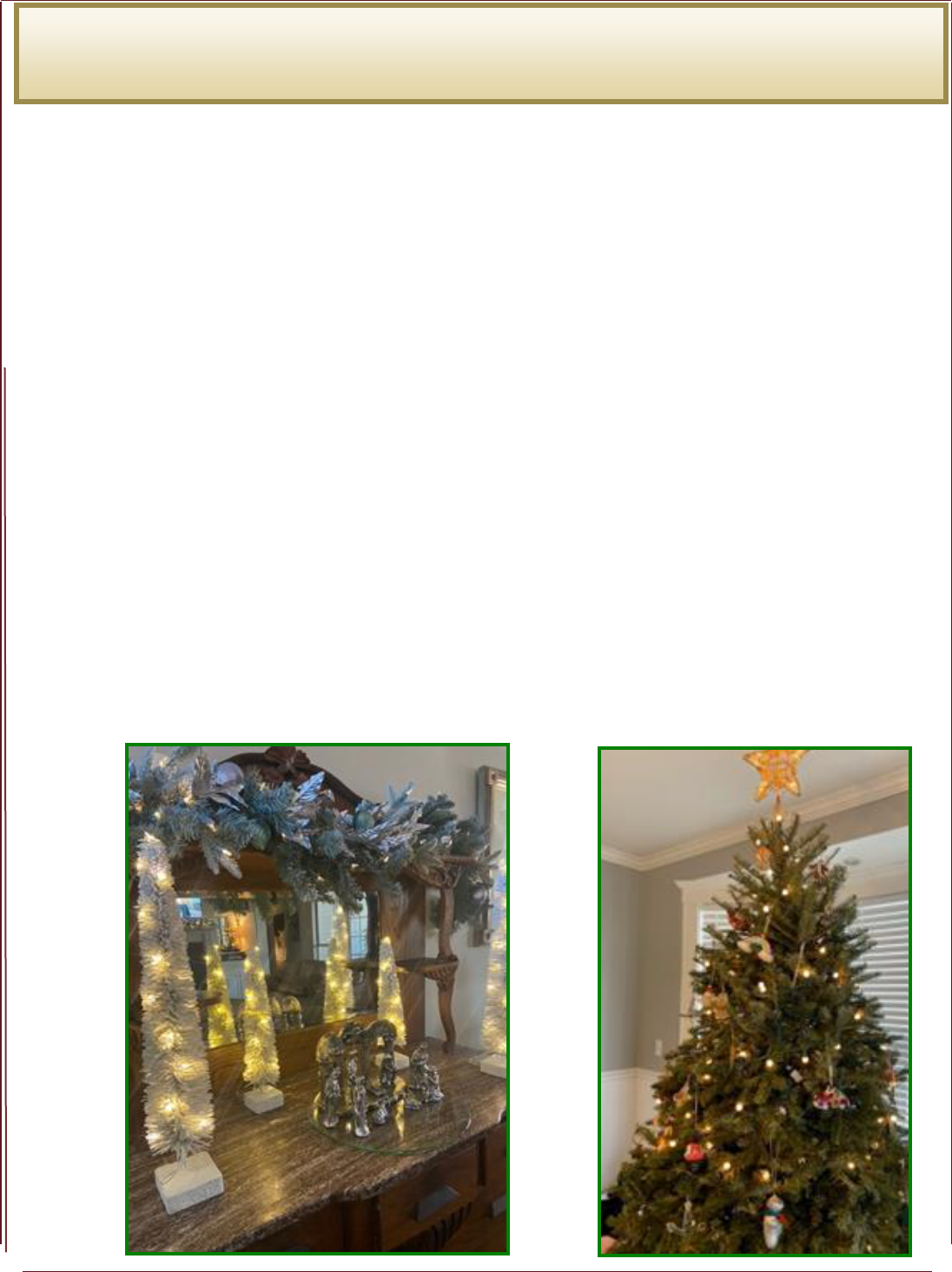
6 Volume 13: Issue 3 Fall/Winter 2022
Leadership
Mary Jo Goolsby, FAANP
CLOSING REMARKS
I must share my sadness to learn that this could be the final FAANP Forum. As Mary Neiheisel retires
from editing the Forum, there is not yet a replacement plan. The Forum has long served as our primary communi-
cation link. While I do not know what percentage of Fellows read new issues of the Forum when they are first
published, it has been an online connection to which we could turn to learn about FAANP events, the accomplish-
ments of many Fellows, and timely discussions. I would deeply miss this regular touchpoint and implore the
FAANP Executive Committee to ensure that the Forum continues serving our growing Fellowship.
The Forum arose from FAANP’s first facilitated Strategic Planning meeting held during our 2010 Winter
Meeting, chaired by Judy Berg. With just over 200 FAANP members, the plan included several recommendations
to move FAANP forward, including the creation of a quarterly newsletter to enhance communication and aware-
ness among Fellows. At that time, we had no regular communication vehicle other than periodic email blasts;
listservs had been tried and proven unsuccessful. For over a decade, Mary has ensured that the Forum is pub-
lished regularly, with a growing breadth of content to meet our needs.
So, for now, I will simply say:
THANK YOU TO MARY NEIHEISEL FOR YOUR SELFLESS SERVICE TO THE FAANP FORUM OVER
THE YEARS!
THANK YOU TO ALL WHO HAVE CONTRIBUTED TO THE FAANP FORUM OVER THE YEARS—I
HOPE IT WILL CONTINUE!
Note: Thank you Mary Jo. I echo you in your thoughts.

7 Volume 13: Issue 3 Fall/Winter 2022
What to Read Now
Kim Curry, FAANP
What to Read Now:
Reviewing NONPF’s New NP Role Core Competencies
The National Organization of Nurse Practitioner Facul-
ties (NONPF) has long been involved in identifying and articulat-
ing competency standards for nurse practitioners (NPs). For over
30 years, NONPF has provided leadership in establishing ex-
pected competencies for NP entry into practice. Beginning in
2008, NONPF began writing core competencies at the doctoral
level to reinforce NONPF’s endorsement of the DNP as the entry-
level practice degree for NPs.
The NONPF board recently identified a need to revise the
NP competencies to be congruent with the 2021 American Associ-
ation of Colleges of Nursing (AACN) Essentials. The Commission
on Collegiate Nursing Education (CCNE) is the accrediting arm of AACN and requires colleges of nursing to show
evidence that they have provided the curricular elements described in the Essentials as a condition of accredita-
tion. Note that CCNE is one of three organizations that can accredit nursing clinical doctorate programs.
As a result of the joint effort between NONPF and CCNE, NONPF released the revised Nurse Practitioner
Role Core Competencies in July 2022, replacing the prior NP Core Competencies. The new competencies are again
written to be evaluated at the clinical doctoral level. They are considered essential for all nurse practitioners and
therefore are not specific to the population focus of individual NP program tracks.
Competencies are designed to be demonstrated at the time of graduation and are considered necessary for NPs to
meet the complex challenges of translating knowledge into practice and being able to function in a rapidly chang-
ing health care environment. Programs preparing NPs are expected to meet all the competencies included in the
Essentials as well as NONPF’s NP Role Core Competencies through their curricula.
The NONPF NP Role Core Competencies are an extension of the AACN Level 2 Sub-Competencies in the Essen-
tials and according to NONPF, are designed to complement them. The Core Competencies match the ACCN Essen-
tials in including ten domains with descriptions of competencies under each subhead. The ten domains are:
1. Knowledge of practice
2. Person centered care
3. Population health
4. Practice scholarship and translational science
5. Quality and safety
6. Interprofessional collaboration in practice
7. Health systems
8. Technology and information literacy
9. Professional acumen
10. Personal and professional leadership

8 Volume 13: Issue 3 Fall/Winter 2022
What to Read Now
Kim Curry, FAANP
Readers can see the crosswalk between the Essentials and the NONPF Core Competencies on the NONPF
website. It’s a good idea to go through the crosswalk between AACN and NONPF in detail to compare the content
developed by both organizations. As an example, Domain 4 is Practice Scholarship and Translational Science. My
eye was naturally drawn to this domain to dig into in detail. Both AACN and NONPF include three competencies
in this domain:
Advance the scholarship of NP nursing practice
Integrate best evidence into NP practice
Promote the ethical conduct of scholarly activities
However, the three competencies each contain sub competencies that make the competency somewhat
more measurable, and this is where the differences occur. As an example, I will use Competency 3: Promote the
ethical conduct of scholarly activities.
The AACN sub competencies for Competency 3 are:
1.3d Integrate foundational and advanced specialty knowledge into clinical reasoning.
1.3e Synthesize current and emerging evidence to Influence practice.
The NONPF sub competencies for Competency 3 are:
1.3f: Demonstrate clinical judgement using a systematic approach to inform, improve, and
advance NP practice processes and outcomes.
1.3g: Demonstrate clinical judgement to inform and improve NP practice based on the
foundational knowledge of advanced physiology/pathophysiology, advanced health assess
ment and advanced pharmacology
1.3h: Synthesize current and emerging evidence to influence NP practice.
The focus of the AACN language above is integration of knowledge and clinical reasoning. The focus of the
NONPF language is the use of judgment to inform practice, while basing this judgment on NP foundational cours-
es. Both organizations share the sub competency of synthesizing evidence into practice. It is interesting that
AACN uses the term “clinical reasoning” while NONPF uses “judgement”.
The leadership at NONPF has pointed out that sometimes, the difference between the NONPF competen-
cies and the AACN competencies is the NP focus. At other times, domains were expanded by NONPF to be specif-
ic to the NP scope of practice. Dr. Mary Ellen Roberts is a member of the JAANP editorial board and served on
the NONPF Curricular Leadership Committee that produced the new competencies. Dr. Roberts points out that
the purpose of creating competencies in addition to the existing AACN Essentials was to enhance NP education by
mapping the NONPF Competencies to the AACN Essentials. This will enable faculty to easily adapt the AACN
Essentials and the NONPF Core competencies to their curriculum.
As NP educational programs continue to grow and expand quickly, all NPs have a vested interest in un-
derstanding and providing feedback on those criteria and standards that aim to ensure high quality programs. The
production of high quality, competent nurse practitioners, especially those prepared at the clinical doctorate level,
is critical to the health of our population. More than that, their competence reflects on all other NPs and can im-
pact our shared ability to expand our role, realize our scope, and recognize our potential.
Reference:
National Organization of Nurse Practitioner Faculties (2022). National Organization of Nurse Practitioner
Faculties' Nurse Practitioner Role Core Competencies. NONPF. https://www.nonpf.org/page/
NP_Role_Core_Competencies

9 Volume 13: Issue 3 Fall/Winter 2022
Education
Jamie Newland, FAANP
Authorship, Publishing, and Writing
During my doctoral studies, I worked on several projects with staff
at the center where I conducted my research. I remember asking for an ap-
pointment with the director. As soon as I walked in the room before I could
even sit down, he said, “This is about authorship, right?” I replied yes. He
simply stated, “Whoever does the most work is first author.” I felt relieved
that I was not going to have to fight for first authorship. In writing, author-
ship should be the first consideration that is discussed and agreed upon by
the team, including the order of authors. An author is someone who writes.
The International Committee of Medical Journal Editors (ICMJE)
(2022) recommends that authorship be based on the following 4 criteria:
1. Substantial contributions to the conception or design of the work;
or the acquisition, analysis, or interpretation of data for the work; AND
2. Drafting the work or revising it critically for important intellec-
tual content; AND
3. Final approval of the version to be published; AND
4. Agreement to be accountable for all aspects of the work in ensur-
ing that questions related to the accuracy or integrity of any part
of the work are appropriately investigated and resolved. (p. 2)
Any person or contributor who does not meet all four of these criteria is not an author and should instead be
acknowledged in the manuscript. The ICMJE document provides guidance on all aspects of writing a manuscript,
from conceptualization to publication. Many journal editors note in the author guidelines that the journal follows
the ICMJE recommendations for all phases of the process from submission of a manuscript to final editorial decision
that might or might not lead to publication.
The International Society for Medical Publication Professionals (ISMPP) (2022) provides further clarifica-
tion on what constitutes authorship or a significant contribution to the work, particularly with research:
1. Concept and design: Development or substantial modification of research idea,
study design, methodology protocol, statistical analysis plan, or a combination of
these activities; or
2. Data acquisition: Significant contribution of data (quality and quantity) to the
final analyses; or
3. Data analysis: Performance of the data analysis and assurance of the integrity
of the data and statistical analyses; or
4. Data interpretation: Derivation of conclusions, placement of results into context, or identification of
knowledge gaps for future exploration. (p. 866)
What does not constitute a significant contribution to the manuscript and is not authorship?
1. Concept and design: Writing the protocol or clinical study report, literature search, obtaining fund-
ing
2. Data acquisition: Study site activation, site monitoring, data entry, query management
3. Data analysis: data cleaning, database management, data handling, data storage, software, technol-
ogy
4. Data interpretation: Programming output tables, data management, managerial responsibility, edito-
rial assistance, compiling submission package/submission (p. 868)

10 Volume 13: Issue 3 Fall/Winter 2022
Education
Jamie Newland, FAANP
Faculty regularly mentor students to help them be successful in publishing their papers. But is the faculty
member an author? Some schools publish guidelines for student-faculty collaborative research/writing/publication.
As a general rule, simply providing comments or editing a student’s paper does not constitute authorship for the
faculty and the faculty’s name should not appear on the manuscript. Faculty should model ethical behavior for stu-
dents relative to publishing standards. I encourage all faculty to become familiar with the recommendations of IC-
MJE and ISMPP. Saver (2022) provides a concise and easy-to-understand summary of the ISMPP recommenda-
tions.
On a lighter note, I want to provide a few quotes about writing in general. When students ask how many
pages to complete an assignment requiring a paper, I reply, “Use only as many words as you need to say what you
need to say.” This response, of course, drives them crazy. Mark Twain is noted with saying, “Writing is easy. All
you have to do is cross out the wrong words.” And finally, Dr. Seuss wrote,
“It has often been said
there’s so much to be read,
you never can cram
all those words in your head.
So the writer who breeds
more words than he needs
is making a chore
for the reader who reads.
That’s why my belief is
the briefer the brief is,
the greater the sigh
of the reader’s relief is.
And that’s why your books
have such power and strength.
You publish with shorth!
(Shorth is better than length.)”
Happy writing and publishing!
References
International Committee of Medical Journal Editors. (2022). Recommendations for the conduct, reporting, editing, and
publication of scholarly work in medical journals: Updated May 2022. https://www.icmje.org/
recommendations/

11 Volume 13: Issue 3 Fall/Winter 2022
Celebrating Five Years of the AANP International Ambassador Program!
It’s hard to believe the AANP International Ambassador Program has been
active five years! So, maybe it’s time for a five year historical review and a discussion
of the cohorts who have been selected and continue to serve as International Ambassa-
dors.
Many years ago, serving as the AANP International Liaison, Madrean Schober
did much of the formal international communicating and collaborating AANP did at
that time. Most of that involved work with the International Council of Nurses Nurse
Practitioner/Advanced Practice Nurse Network (formerly the International Council of
Nurses Nurse Practitioner/Advanced Practice Nursing Network), commonly referred to
as the ICN NP/APN Network or the Network. Other work done at that time included
assisting with the website the ICN NP/APN Network maintained at that time
(previously hosted by AANP, but since taken over by the Network) and answering questions posed to AANP that
pertained to NP/APN development outside the US. As most of you know, the Network developed out of the work
of multiple AANP members. When the Network was fully formed and functioning well, and the American Acade-
my of Nurse Practitioners and the American College of Nurse Practitioners merged in 2013 to form the American
Association of Nurse Practitioner Dr. Schober’s position was not retained in the merger. At that time the Interna-
tional Committee was formed to address some of the work Dr. Schober had been doing to that time. The commit-
tee also reviewed the work of the Network and, not wanting to duplicate the work of the Network and with AANP
BOD support, chose to create the International Ambassador Program. The goal of the program was to select a few
individuals each year who would not only serve as International Ambassadors but who would also work to build
and improve NP/APN practice in their countries and around the globe. It was thought attending the AANP An-
nual Conference would stimulate their thinking about what NPs/APNs could do and allow networking to assist in
that effort. Those goals have been well met by the Ambassadors. So, each year at this time, AANP takes applica-
tions from around the globe, and chooses among them for the best candidates, announcing their Ambassadorship
the following year and bringing them to that year’s conference, whenever possible. If circumstances arise, such as
the recent pandemic, that attendance is honored whenever the Ambassador is able. While there have been five
cohorts there have only been three times when the Ambassadors could attend the conference due to cancellation of
the in-person conference because of Covid 19. The pictures depict the years the ambassadors have been able to at-
tend.
2018 International Ambassadors
Left to right: Bongi Sibanda, Scholastica Chibehe,
Kathy Wheeler (then International Committee Chair and BOD Liaison), Mabedi Kgositau, Heather McGrath
Policy
Kathy Wheeler, FAANP
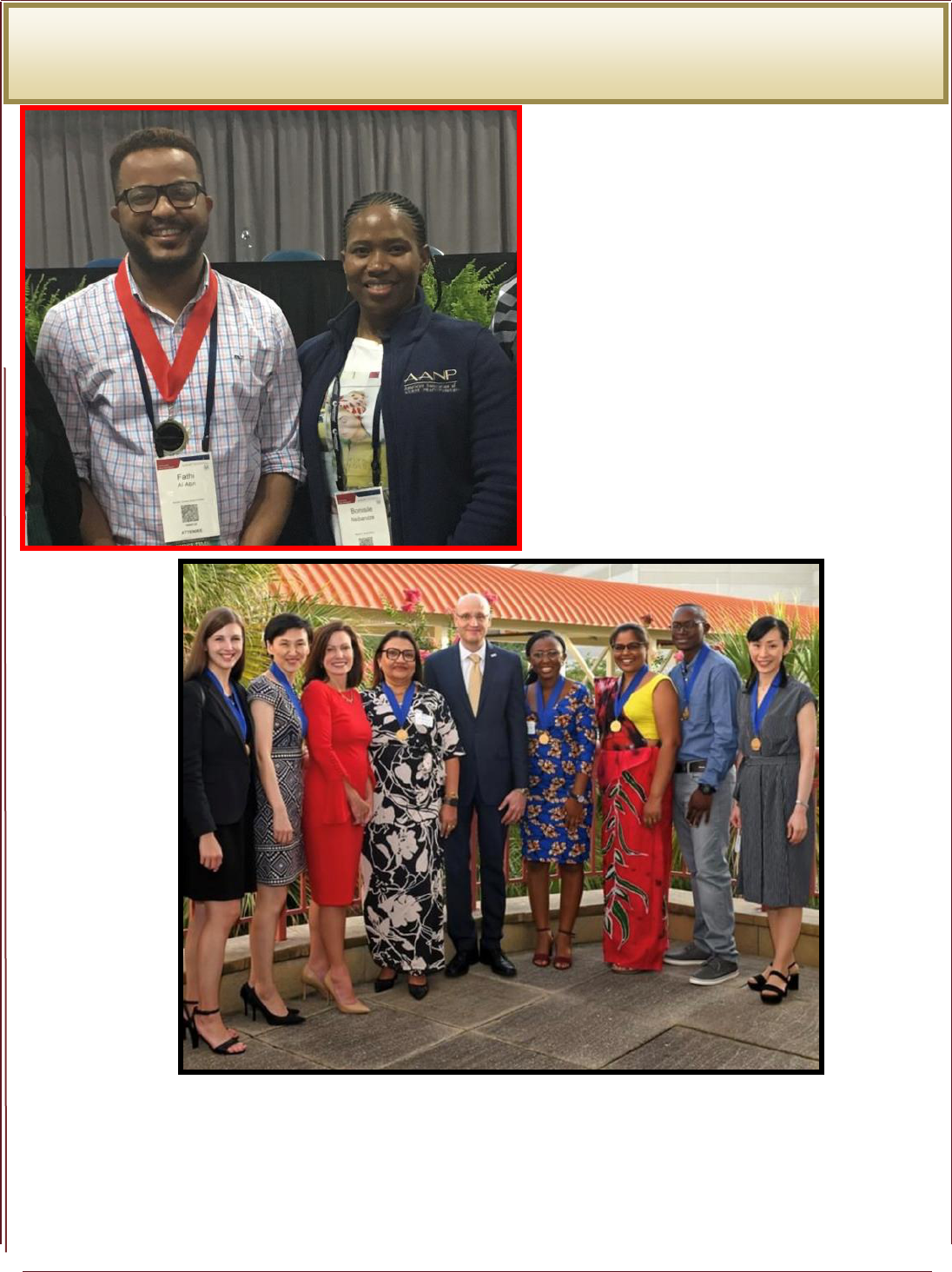
12 Volume 13: Issue 3 Fall/Winter 2022
Policy
Kathy Wheeler, FAANP
2019 International Ambassadors
Left to right: Fathi Al Abri
Bonisile Nsibandze
2020, 2021, 2022 International Ambassadors
Left to right: Patricija Luneznik (2022), Wentao Zhou (2022), AANP President
April Kapu, Maria Auxiliadora Rodrigues (2020), AANP CEO Jon Fanning, Evelyn
Amoako (2922), Sriyani Padmalatha (2021), Joseph Kilasara (2021), Nanako Tsu-
kui (2020). Rachel Kimani (2021) attended the conference but did not join the
group for the dinner where this shot was taken.

13 Volume 13: Issue 3 Fall/Winter 2022
Blast From the Past
Barbara Sheer, FAANP
There have been so many changes in the past few months and so many
memories. In September we remember those who died in the September 11
th
attack it’s been 21 years and we are still dealing with health issues associated
with the first responders. The life of Queen Elizabeth is being celebrated. There
are so many stories surfacing from her reign over the past 70 years. These sto-
ries have been preserved and will be available for future generations.
Nurse Practitioners have many stories and so little of the stories are pre-
served. We think about the pioneers that have gone before us. In writing a
memorial for Joan Gregory one of our founding members, we found there was
little written about her. Her biography was no longer on the FAANP website
since she was no longer a member. We needed to rely on memories of those who
knew and worked with her. This is a sad commentary of our early leaders.
The AANP History committee has embarked on the Oral History Pro-
ject in conjunction with the UVA Bjoring Center for Nursing Historical
Inquiry. We are preserving the 57 FAANP interviews that have been published
in the FAANP Forum. They will eventually be placed in a researchable format
and available at center’s website and linked to the AANP history website . The
interviews have been done over the past 12 years utilizing standardized ques-
tions. We hope this is a first step in preserving our history we would like all
fellows to interview their mentors and be interviewed. We have developed a protocol for the interviews and ques-
tions, and this can be sent to you upon request, and we hope to put this on our website in the future.
The regional meetings, zoom meetings and online conferences make sharing information quick and effi-
cient. Social media presents the opportunity for real time communication throughout the world. We have come a
long way. In the early interview with Susan Wysocki, we reminisced the early days of communication. Imagine
no fax, no internet, no email, or social media. We had telephones, FedEx and overnight mail. Nurse practitioners
were undeterred. We developed telephone trees on a local, state, and national level. These telephone trees were so
effective that a contentious meeting at the Pennsylvania Medical Society with the director speaking adamantly
about the threat of nurse practitioners and that any physician married to a nurse practitioners should be banned
by the society resulted with many physicians resigning from the society the next morning.
We viewed the fax machine as a wonder. Then voicemail, email, and the internet assisted our communica-
tion. Today we are bombarded with messages 24/7 some positive and some negative. We are stressed and spend
more time with the innovations designed to improve quality of life. Maybe we should begin to get back to the
basics and spend more time breathing.
The upcoming elections will challenge our resolve. I remember in the 80s when we hired Hurdis Griffith to
introduce us to lobbying in the capital. This resulted in our hiring Carole Jennings who opened many doors and
spent many years on the hill lobbying for AANP and teaching us how to make a difference. How many of us re-
member these leaders? I am sure they are lost to the history of AANP and superseded by those who were more
visible. This is the part our history must play. What is happening today is history tomorrow. I hope that we can
continue to preserve and protect our history.

14 Volume 13: Issue 3 Fall/Winter 2022
Art & Creativity
Richard Riccardi, FAANP
In this issue of the Art and Creativity column, I am pleased to interview Dr.
Mimi Secor. Mimi is a Family Nurse Practitioner, who has been specializing in
Women’s Health for over 40 years. Recently, Mimi has focused on transforming and
improving population health and well-being through fitness. Mimi is a popular Na-
tional Speaker, Educator, Entrepreneur and Health Coach.
During the pandemic, Mimi has found more time for her creative side, spe-
cifically watercolor painting. Mimi mentioned that she needed to do something to
reduce my stress (from the pandemic and perpetual bad news) so she decided to
take online watercolor painting lessons.
Taking up painting at age 66 has provided Mimi with a new passion bringing much joy to her life. For
example, she loves sharing paintings with friends, family and on social media. Quite frequently people message
her - asking if she sells her paintings? So, a bit of additional income has been nice too. Mimi is working on creating
an Esty Store so she can sell prints of her original work.
Mimi is inspired by nature and enjoys painting birds, seashells, and flowers. She is particularly fascinated
by hummingbirds, cardinals, and shore birds. One of her favorite flower paintings was inspired by Georgia
O’Keeffe’s “White Iris”. Mimi has also created a rendition of van Gogh’s “Starry Night”.
Mimi encourages all NPs to create time in our busy schedules to devote to hobbies, interests, or pursue a
new hobby/interest/activity. It might just spark your passion and give you a reason to take time from work and
your other life obligations to slow down and do something creative and restorative. Mimi shares her perspective:
“I am pretty sure you will experience, like I did, the many benefits of creative, mindfulness activities.”
On the following page are examples of Art work by Mimi Secor.
The effects of this new hobby on Mimi’s psyche/mood were immediate and have been long lasting. Right
away she became happier and less stressed. Each session transformed her mood and awakened a creative spark
had buried many years earlier. Mimi loved art in high school but was advised against pursuing it as a career
since it was unlikely she would be able to earn a living. So, thankfully for all of us, she became a nurse. Mimi fell
in love with nursing especially being an NP (at age 22). Soon Mimi became a workaholic taking on challenge
after challenge and wound up in a continuous state of near burn out because she wasn’t taking time to destress
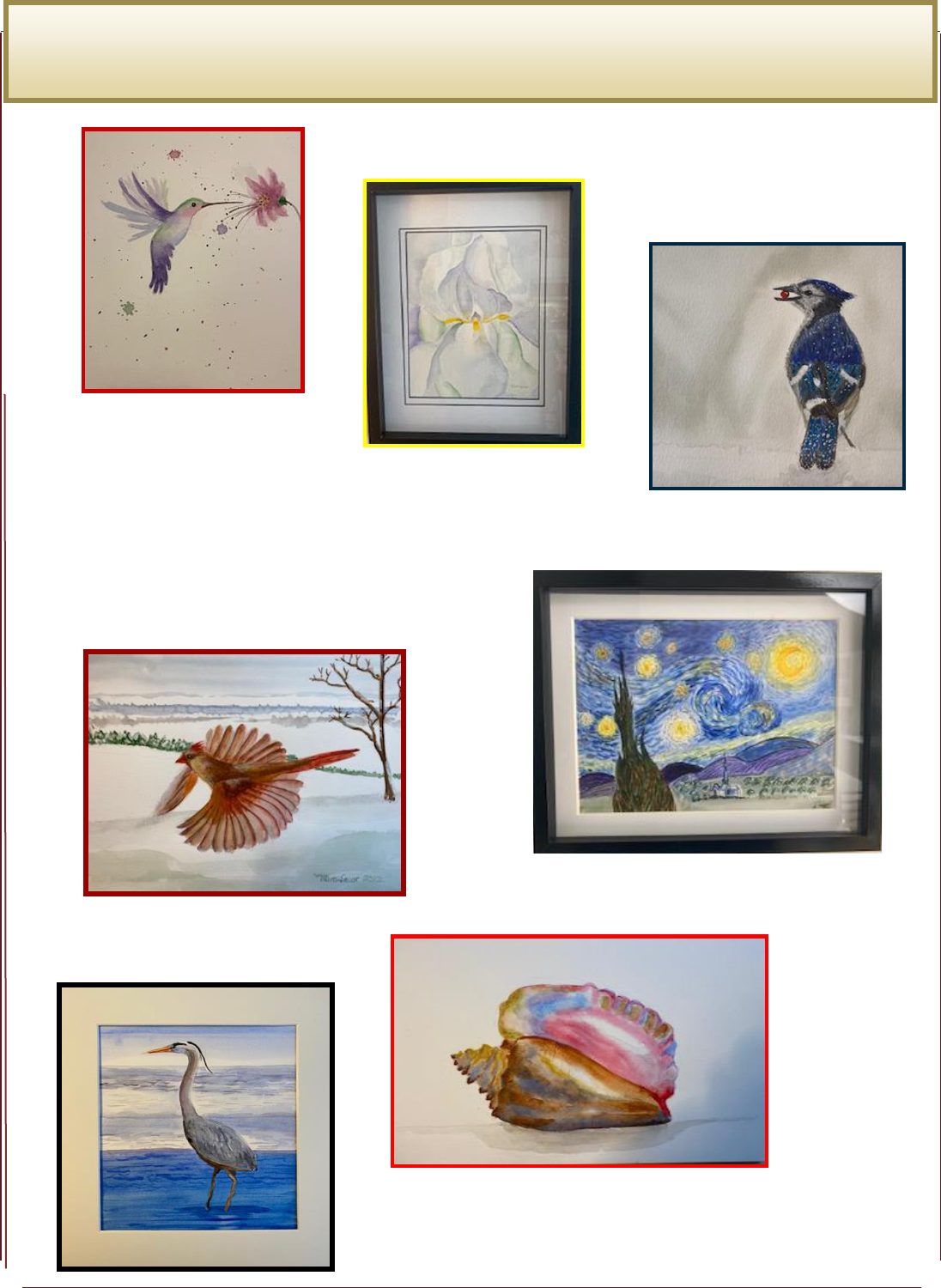
15 Volume 13: Issue 3 Fall/Winter 2022
Art & Creativity
Richard Riccardi, FAANP
Art
by
Mimi Secor
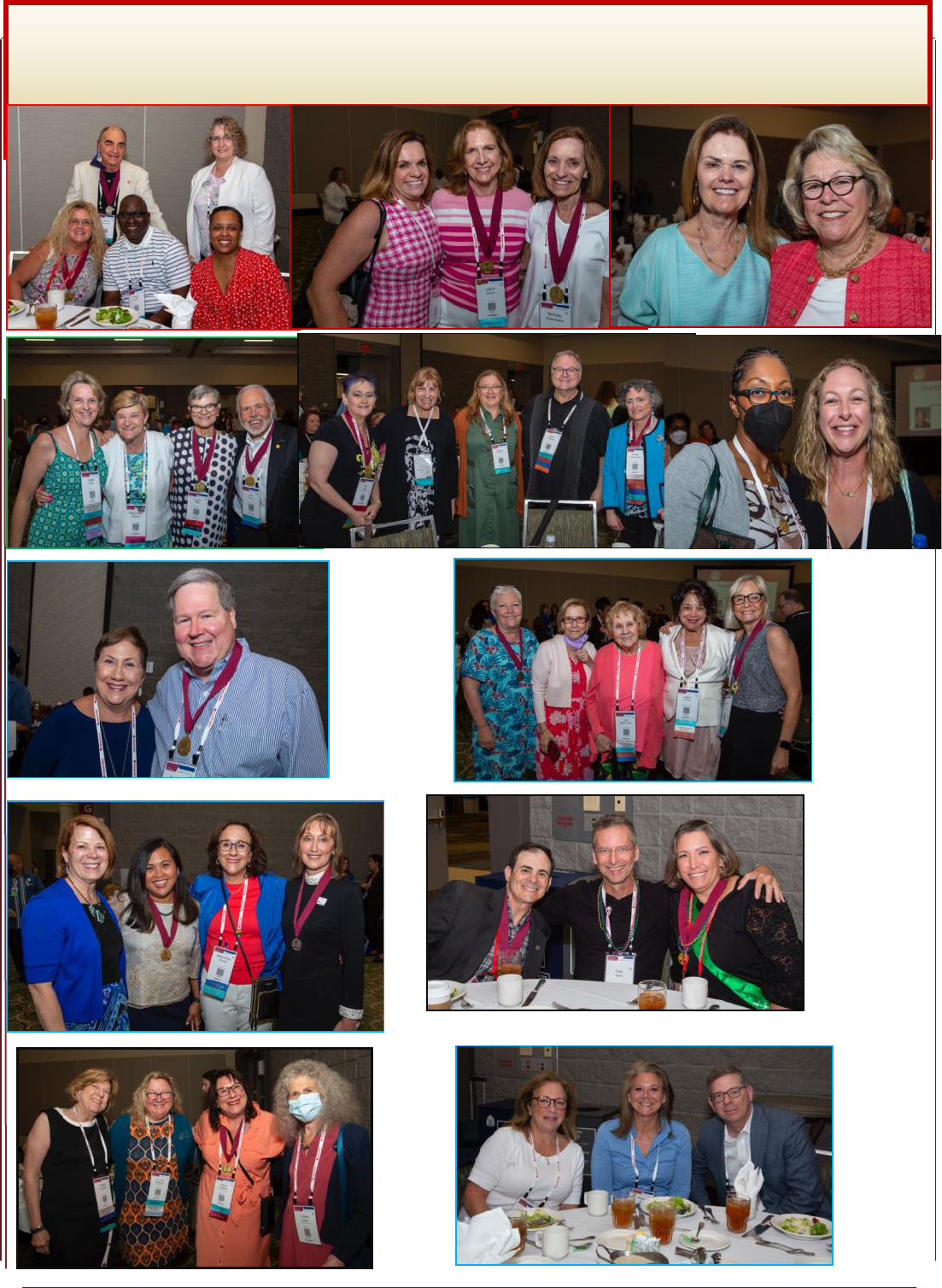
16 Volume 13: Issue 3 Fall/Winter 2022
FAANP Business Meeting-June2022
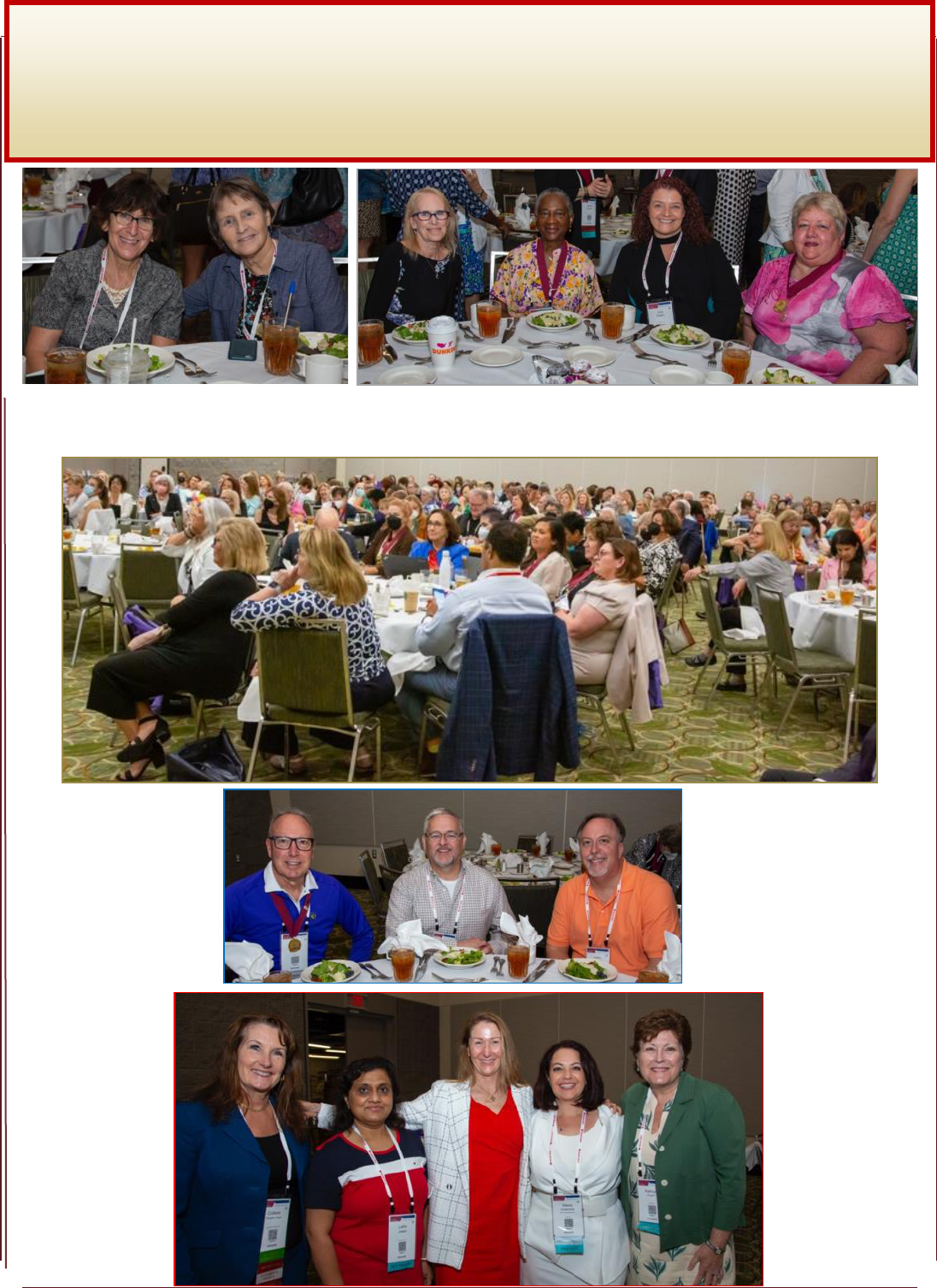
17 Volume 13: Issue 3 Fall/Winter 2022
FAANP Business Meeting
June 2022

18 Volume 13: Issue 3 Fall/Winter 2022
FAANP Business Meeting
June 2022
Thank you to our es-
teemed and talented pho-
tographer:
Ric Ricciardi
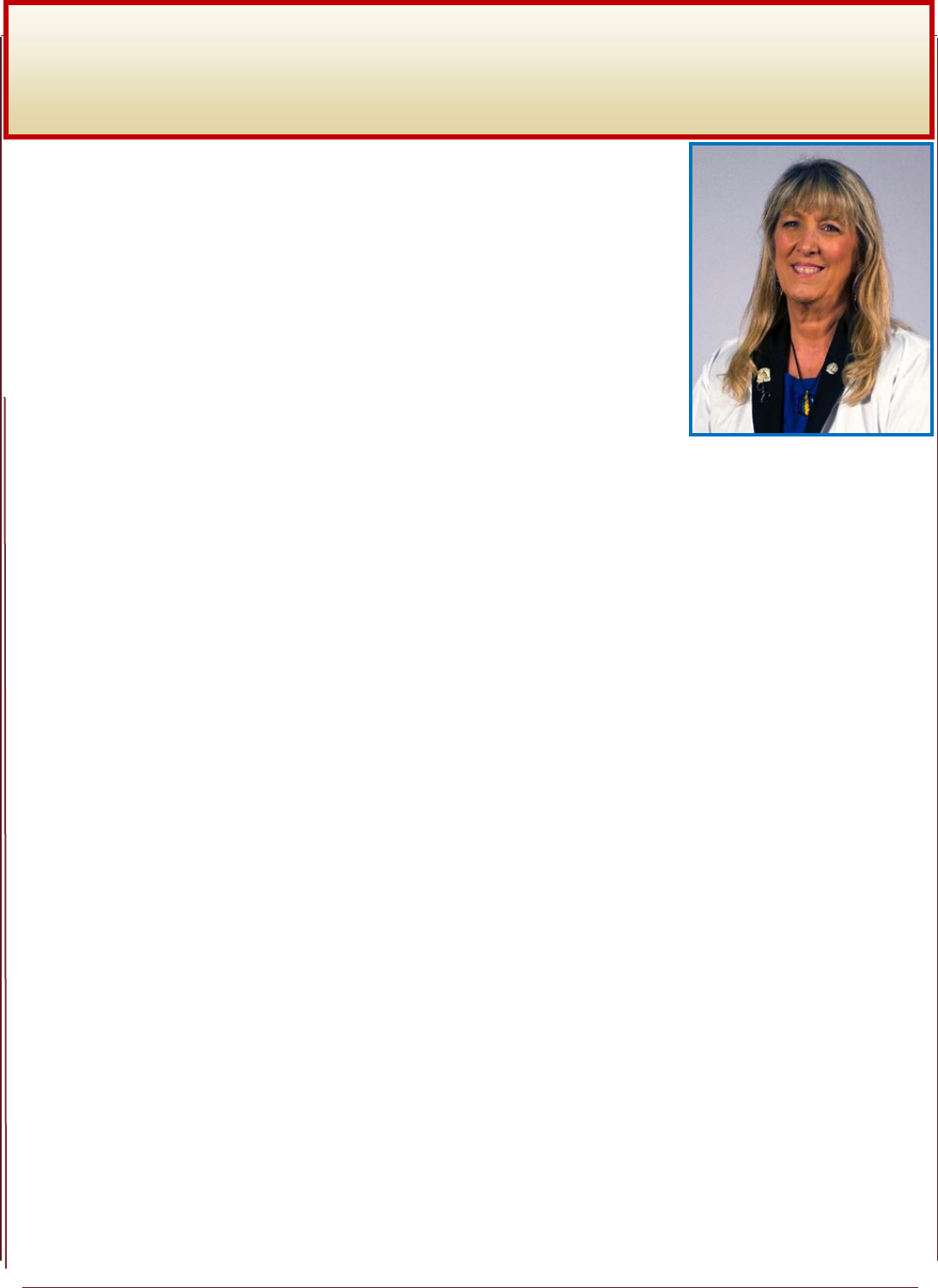
19 Volume 13: Issue 3 Fall/Winter 2022
Membership Feature Column
Angie Golden, FAANP
Michaelene P Jansen, FAANP
2008 Education: Doctor of Nursing Practice, Arizona State University,
1998 MS (FNP) Northern Arizona University,
1996 MNED University of Phoenix,
1977 BSN Ball State University
Certifications; FNP-C
Short Bio:
Dr. Angela Golden is a current Fellow and past President of the American
Association of Nurse Practitioners. Her tenure as the President of AANP gives her a
unique and overarching perspective of the multifunctional role of the nurse practi-
tioner. For the past 24 years, Angie has had her own practice—NP from Home,
LLC—where she provides clinical services in a family practice setting and for the
past seven years a subspecialty obesity practice, NP Obesity Treatment Clinic.
Dr. Golden has a great deal of experience in leadership positions and clinical practice. She has authored
peer-reviewed articles and book chapters covering a range of health topics including health policy. She has pre-
sented nationally and internationally with an emphasis on health policy, leadership, and various clinical topics.
When did you become an NP? What was the motivation?
I became a nurse practitioner in 1998. My motivation centered around what my next professional steps
were going to be as my family moved to a rural community. Prior to that I was a flight nurse, and that role is one
of a great deal of independence. I would be leaving that position to move and trying to decide what my next steps
would be. Throughout my own healthcare journey many times or taking my children to a pediatric NP, I could
see the value of that role especially moving to a rural community. I began to explore further education, as I al-
ready had a master’s in nursing education. I was fortunate to find Northern Arizona University’s program as it
had a focus on rural health.
What experiences did you bring into the role?
Most of my nursing experience revolved around acute and critical care. I worked in level two and level one
emergency rooms, many different critical care units including neonatal intensive care, open-heart units, adult,
and pediatric critical care. For 10 years prior to becoming a nurse practitioner, I was a flight nurse, eventually
serving as the Chief Flight Nurse for one of the first non-hospital-based program in the country. I also had some
other unique opportunities in nursing; for three years I was a school nurse. I also did home health including
during the early years of the AIDS epidemic, specializing in care for this population, and pediatric hospice pain
management care.
Did you experience any challenges? How were they resolved?
I was fortunate to become a nurse practitioner in Arizona just as full practice was passed. I only had one
year of any type of restricted practice where we had to have 1000 hours of practice before we could prescribe
without oversight. Because I was fairly new in the role, I was not involved in the advocacy for full practice.
There have been other challenges of course, one was opening my own practice without having any real
education on how to run a business. That challenge required a lot of my own education outside of advance prac-
tice nursing, as at that time there weren’t many NPs who were teaching other NPs about running a business.

20 Volume 13: Issue 3 Fall/Winter 2022
Membership Feature Column
Angie Golden, FAANP
Michaelene P Jansen, FAANP
Are there any experiences that you would like to talk about?
One of the greatest experiences I have had as a nurse practitioner is in leadership. Just before graduating
from my NP program, I joined AANP and then was provided the opportunity to step in as the Arizona state rep-
resentative to complete someone else’s term. I then ran for that state position and served for two more terms, dur-
ing this time I learned the value of advocating for my profession and the importance of leadership within the pro-
fession. AANP offered me the opportunity to further my leadership opportunities by serving on the Board of
Directors and eventually as the President. Serving as the President of AANP allowed me an opportunity to travel
through the United States, learn about all the unique things that NPs were doing for their communities, and help
move the profession forward by serving with a phenomenal Board of Directors.
What was most challenging in your career/ most important?
Most challenging for me in my profession was moving from the acute care, critical care areas into outpa-
tient patient care. It also became the most important patient care position in my career. We had moved to a very
rural community and the opportunity to serve my neighbors as their healthcare provider of choice was remarka-
ble.
Is there anything you would want to change?
Two things I would change. The first would be for all nurse practitioners to understand the value of belonging to
their national organization. To allow that organization to have their voice as part of advocacy, education,
research, and leadership. The second thing I would change is for full practice authority to become the national
norm for all 50 states and the territories. As an additional item I hope yet to see all barriers removed that prevent
NPs from providing care to their patients.
What do you see as pivotal moments in the past years?
Most pivotal moments in the past 23 years of being a nurse practitioner include seeing so many more
states earn full practice authority through the advocacy of those living in that state as well as seeing NPs become
the provider of choice for so many patients. Many of these patients would not have had access to primary care if
not for the NPs offering healthcare in their communities.
What advice would you give to new nurse practitioners?
The best advice I have for a new nurse practitioner is to recognize the horizon is bright. Fewer and fewer
barriers are preventing patients from receiving care from us. I would encourage each new NP to look for new
opportunities and new ways to provide that care to patients. Always looking for ways to collaborate with other
professionals on an equal standing. Find a mentor who will support you, who will help you find your path to the
professional that you want to be.
What do you see as the role of Nurse Practitioners in the next 25 years?
The role of the nurse practitioner in the next 25 years, if I had a crystal ball, would include full practice
authority for every NP. I also think that there are roles that are going to come available for NPs that we don’t
even see possible at this time. The reason I believe that is it as I look over the past 25 years, I see how many areas
where NPs have created new roles, new experiences, and new ways to care for patients and communities that were
simply unheard of or not thought of in the past.
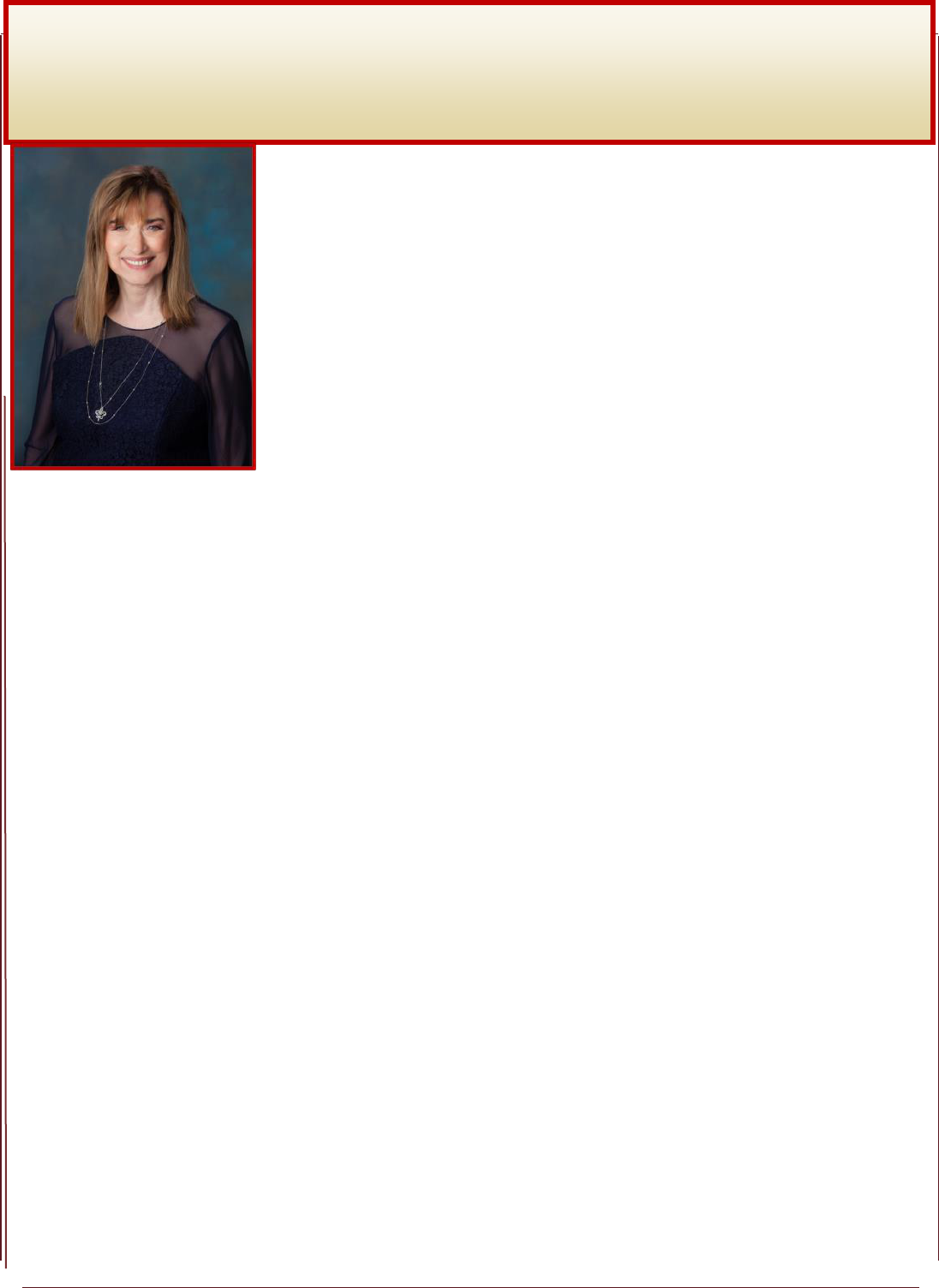
21 Volume 13: Issue 3 Fall/Winter 2022
Membership Feature Column
Mary B. Neiheisel, FAANP
Michaelene P Jansen, FAANP
Education:
Baptist Memorial Hospital School of Nursing G.N., Diploma. in Nursing, San Antonio,
Texas, 1960
Incarnate Word College B.S. in Nursing, San Antonio, Texas, 1962
University of Colorado M.S. in Nursing Education, Boulder, Colorado, 1965
Louisiana State University Ed.D. University of Louisiana, Lafayette, Louisiana, 1981
Midwestern State University, Post Graduate Certificate, Family Nurse Practitioner,
Wichita Falls, Texas, 1995
Other Coursework:
University of Colorado Health Science Center, Advanced Nursing 1997
Northern Kentucky University Gerontology NP 2005
Northern Kentucky University Adult NP 2006
Certifications;
Registered Nurse Licenses in Texas and Louisiana, Advanced Practice Nurse License in
Louisiana, Certification as CNS-BC in Adult Health, Certification as APRN-FNP-
Short Bio:
Dr. Mary B. Neiheisel joined the University of Southwestern Louisiana (USL) now the University of Lou-
isiana at Lafayette (ULL) faculty in 1966. She held the Pfizer/Ardoin Endowed Professor in the College of Nurs-
ing and Allied Health Professions at the University of Louisiana at Lafayette, until 2000. In 2000 and continuing
she holds the Lafayette General Medical Center/BORSF Professorship in Nursing II.
A native of Texas, Dr. Neiheisel began her studies at Baptist Memorial Hospital School of Nursing in San
Antonio, Texas in 1957 graduating in 1960. Her B.S. in Nursing is from Incarnate Word College, San Antonio,
TX. She received an M.S. in Nursing from the University of Colorado, Boulder in 1965. Her Ed.D. completed in
1981, is from Louisiana State University, Baton Rouge. She then completed a Family Nurse Practitioners curric-
ulum in 1995 from Midwestern State University in Wichita Falls, Texas. In 2005, she completed additional course
work in Adult Nurse Practitioner from Northern Kentucky University.
During her career, she has been recognized with many honors both for her professional accomplishments
as well as her civic and philanthropic involvements. In 2009, she was recognized as a Friend of the National Or-
ganization of Nurse Practitioner Faculties. In 2008, she was nominated for Outstanding Nurse Educator for
NONPF. She is a Fellow of the American Academy of Nurse Practitioners (2006), the first in Louisiana to be rec-
ognized, The University of Louisiana Lafayette Foundation recognized her as a Distinguished Professor, the first
in the College of Nursing and the first and only one in the 20th century. She won the Women of Achievement
Award for Zonta Club of Lafayette in 2008; the Women of Excellence Award from the Lafayette Commission of
the Needs of Women in 2003. Rotary club has recognized her on many occasions for many accomplishments.
She provided services to many boards in the community, including the Acadiana Center for the Arts,
Camp Bon Coeur, PASA, Family Violence Intervention Program, the Junior League Advisory Board, the Lafa-
yette Public Library Foundation, the League of Women Voters, Performing Arts Society of Acadiana, Rotary,
United Way, March of Dimes, American Heart Association to name a few, but not all. She is especially proud of
the FAANP chair award-the first-in 2015. (Thank you Mary Ellen Roberts). In 2017 she received the Lafayette
Civic Cup, the highest honor in her city. In 2022, a former student and her husband named and endowed the Dr.
Mary B. Neiheisel Graduate NP Student Award and presented from 2022 in perpetuity. In 2022 she received the
first Dr. Mary B. Neiheisel Patron of Hope Award from Faith House of Acadiana. In 2022 she was named Mem-
ber Emeritus of the Acadiana Center of the Arts (ACA) Board of Directors and was celebrated and honored at a
reception and at the Pelican Ball at Acadiana Center for the Arts.
Her tireless dedication to the community and profession includes Editor of Fellow of American Associa-
tion of Nurse Practitioners Quarterly Publication, FAANP Forum. Dr. Neiheisel has been a valued and energetic
force teaching for 57 years at the College of Nursing at the University of Louisiana at Lafayette. In addition to
teaching, Dr. Neiheisel is a family nurse practitioner at Faith House of Acadiana, a shelter for survivors of
domestic violence.

22 Volume 13: Issue 3 Fall/Winter 2022
Membership Feature Column
Mary B. Neiheisel, FAANP
Michaelene P Jansen, FAANP
Honors:
In 2022, a former student, Mrs. Tracy Frentz and her husband, Dr. Bryan Frentz established the Dr. Mary B. Nei-
heisel Graduate NP Student Scholarship which is presented twice a year and has been presented twice and will con-
tinue in Perpetuity.
Sponsored the Richard and Mary Neiheisel endowed Dissertation Award for Doctoral students in the College of
Liberal Arts-2018-2023;
Sponsored the Richard G. Neiheisel Endowed Professor of History. (Professor named for Fall 2017. 2017- in perpe-
tuity. Established the Richard and Mary Neiheisel Dissertation Award for doctoral students. This is an endowed
fund and is enduring. Presented once a year and for the first time in 2011 and in perpetuity.
Established the Richard Neiheisel/Phi Beta Kappa Graduate Student Award for a graduating Graduate student.
This is an endowed fund and is enduring. Presented twice a year since 1990 and in perpetuity.
Sponsored the NONPF Leadership Mentee Program 2018-2020
Established with Dr. Amelie Hollier, the APEA Poster award for NONPF. Presented once a year to four recipients
attending and presenting at the annual NONPF meeting.
Zonta Club of Lafayette: Contribute to and raise funds for four different annual educational awards
When did you become an NP? What was the motivation?
I was appointed Graduate Nursing Coordinator at the College of Nursing at the University of Louisiana at Lafa-
yette in 1989. At that time, we did not have a nurse practitioner track but received numerous inquiries regarding
NP programs. I was certified as an Adult Clinical Nurse Specialist but felt that if we were to offer a nurse practi-
tioner track, I needed to be certified. I had met Dr. Lee Ford in Colorado in the mid-sixties and was intrigued with
the role. However, I was not able to obtain my nurse practitioner certification at that time as I was focused on
nursing education and finances were limited. Midwestern State University offered a post master’s summer pro-
gram for certification as an FNP; so I spent two summers in Wichita Falls, Texas earning the NP certification and
became nationally certified.
What experiences did you bring into the role?
I have been in education for a long time, initially in a diploma program. After obtaining my master’s degree in
nursing education, I taught medical surgical nursing courses at Texas Woman’s University. When I started teach-
ing at the University of Louisiana at Lafayette, it was a small undergraduate program with few faculty. My hus-
band Richard was teaching in the History department when I started teaching at USL. In addition to teaching, I
took on part time administrative duties. I became the graduate coordinator in 1989. Amelie Hollier was in our first
NP class. She greatly inspired me. I consulted with the National Organization of Nurse Practitioner Faculties
(NONPF) frequently. Dr. Lee Ford also came and provided invaluable information and resources. She graciously
stayed overnight to participate in a breakfast with state legislators. Although 60 legislators were invited, only nine
attended but they were instrumental in providing future legislative support for NPs in Louisiana.
Did you experience any challenges? How were they resolved?
Nurse practitioners had great opposition in the early days from a variety of negative groups and this was a chal-
lenge to us all. As a state university funds were and are limited. There was little money for graduate nursing
education. Money for graduate nursing education was provided for a consortium in the state rather than individual
universities. Nurse practitioner tracks met great resistance. Money, provider and faculty shortage also contributed
to the slow progression of graduate nursing programs. There was only one other nurse practitioner at our universi-
ty and we operated on a shoe string. Student enthusiasm and enrollment increased with time. We were soon able
to enroll students in our NP track. There were many physicians who valued NPs and employed them. NPs now
have prescriptive authority, are accepted, and are exceptional. They are well respected health care providers in our
community. They are now employed in a wide variety of settings, some setting up their own practices.

23 Volume 13: Issue 3 Fall/Winter 2022
Membership Feature Column
Mary B. Neiheisel, FAANP
Michaelene P Jansen, FAANP
Are there any experiences that you would like to talk about?
I have always felt that I needed to continue clinical practice. Initially I worked part time in summers in
medical surgical units. I now practice as an NP in a Survivors of Domestic Violence Shelter and have a passion for
providing care for that population. I have been active in fund raising and hope within the next few years to help
fund and open a new shelter. Louisiana is currently 600 beds short for survivors of domestic violence.
I also have been very active in the community including the American Heart Association, coordinating
walks as well the American Cancer Society. I have learned so much from many people working in the non-profit
community. It has been so rewarding helping others. I have also been active on the Board of Directors and com-
mittees for the Acadiana Center for the Arts. I have been awarded the second Member Emeritus award for the
commitment to the Center.
What was most challenging in your career/ most important?
Completing the first level-the RN was the most challenging. Graduating from a very small high school with
a limited science curriculum did not contribute greatly to the college level. I spent more hours in study hall than
most of my classmates and soon developed a steady pace. Completing this level and passing state boards was, of
course, the first and very important step to all future success. It was important to me to not disappoint my
parents, but most importantly not disappoint myself. I try to stay positive and look for positive solutions to any
situation.
Is there anything you would want to change?
I wish we could have started the graduate nursing program earlier in our University However, the commu-
nity assistance, money and acceptance was not there. I feel there is so much more to accomplish. I have been lucky
to have good health and feel that I have even more to contribute to the profession.
If finances had not been an issue when I finished the MSN degree, I might have pursued the post graduate
NP certificate. As it was I had $200.00 when I graduated and needed to work and earn that first pay check.
What do you see as pivotal moments in the past years?
Dr. Lee Ford impressed me greatly. Although she was in pediatrics and I was in the adult program, I was
intrigued with the NP role. She was very instrumental in helping us develop our NP program at the University of
Louisiana at Lafayette. She was so full of ideas and was instrumental in persuading the state legislators to under-
stand and support nurse practitioners. Our graduates were outstanding and able to demonstrate the various dimen-
sions of the NP role.
I would be remiss if I didn’t mention my mother and my husband and all their support. Although they
have been gone for 30 years, they always encouraged me to try new areas. They were so proud of me for obtaining
my doctorate. My husband, Richard was also supportive and encouraged me to continue my education. He truly
believed in nursing education.
I believe that much of my success is due to balance in life. I work hard but also like to relax and have a
good time. I love the theater and have season tickets for Broadway performances in Lafayette and New Orleans. I
have been very supportive of promoting the fine arts in Lafayette. Being involved and immersed in community
activities are both very rewarding. As I said, it keeps me balanced. I truly believe in living the good life.
I have been engrossed with publishing the FAANP Forum for many years. It is also so rewarding. I must
thank Mary Jo Goolsby for her vision of The Forum and her continual service as a committee member. It has
been such an honor to work with Mary Jo and two of the original committee members: Jamie Newland and Patri-
cia Alpert, With the addition of Kathy Wheeler, Rosemary Goodyear, Deborah Gray, Barbara Sheer, and
Kim Curry over the years I have had outstanding support. Richard Riccardi has provided many photographs and
recently has authored the Art and Creativity column. I was blessed with an awesome supportive team.
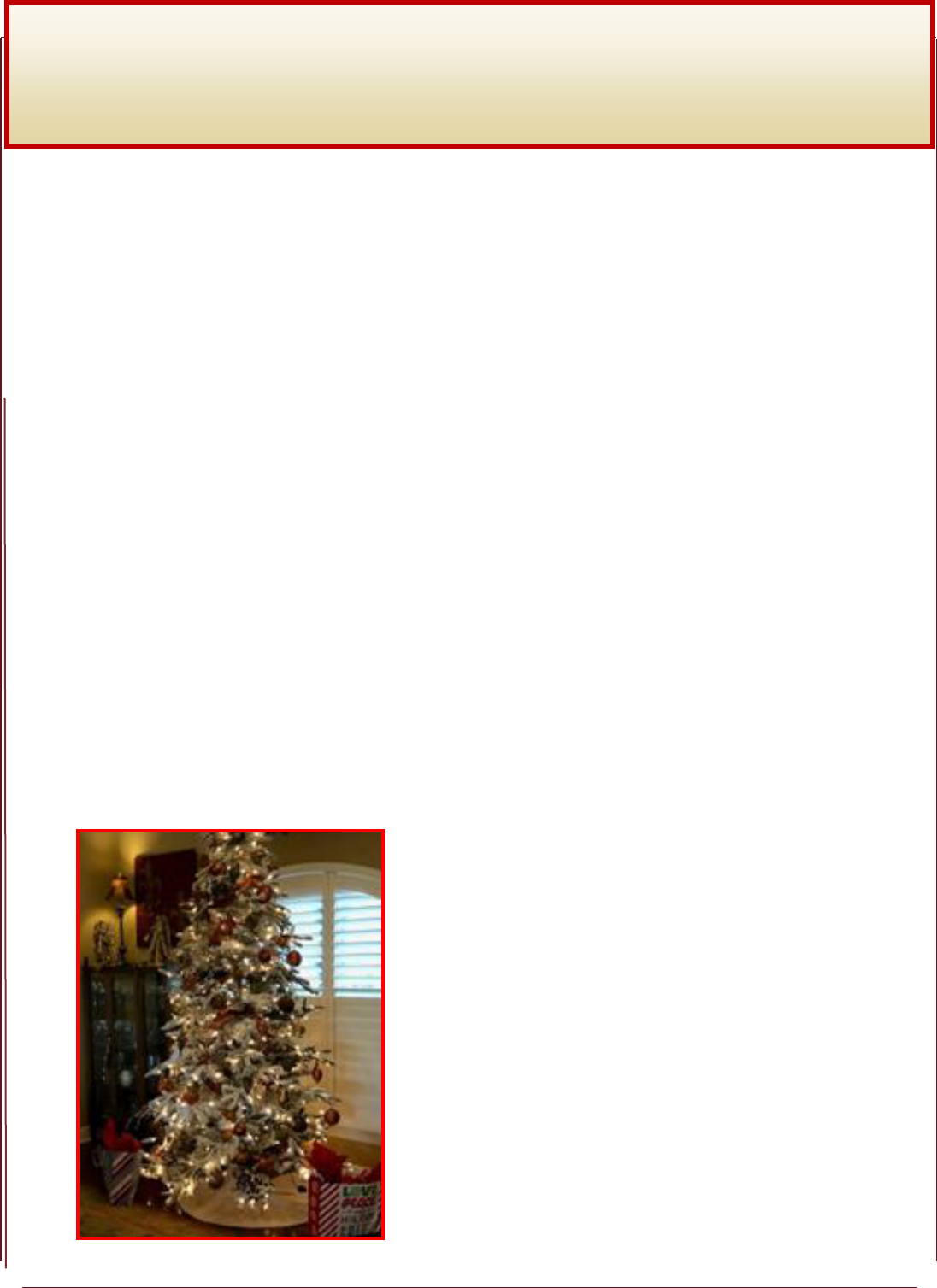
24 Volume 13: Issue 3 Fall/Winter 2022
Membership Feature Column
Mary B. Neiheisel, FAANP
Michaelene P Jansen, FAANP
Pivotal moments for Nurse Practitioners, of course, started with the vision of Lee Ford and Henry Silver
and continued with their tireless efforts in promoting and building the NP role. The first six NP graduates who
immediately started working in the new role inspired others and several universities rapidly began their programs.
The development of NP organizations and the establishment of the American Academy of Nurse Practitioners
(AANP) now known as the American Association of Nurse Practitioners played major roles in the advancement
and acceptance of the NP profession.
What advice would you give to new nurse practitioners?
Don’t give up. Recognize the importance of NPs in prevention of disease and health maintenance and promote
both of these at the highest levels.
Stay up to date.
Participate in local, regional and national activities.
Know trends in health care and what NPs can do.
Don’t be afraid to give yourself credit when credit is due
What do you see as the role of Nurse Practitioners in the next 25 years?
NPs will function in key roles in their communities, state and national efforts. NPs will increase participation in
legislation and ensure that NPs are included in all aspects of health care. There will be more research in document-
ing the value of the NP role. NPs will be a monumental core of health care providers and will be a major factor in
first line health care.
Interviewer’s note: Dr. Neiheisel is one of the most gracious and appreciative women I have met. She continuously
thanks others for their efforts and minimizes her numerous accomplishments.
******
May your Christmas season be
healthy and bright and may all
your future years be the same.
Merry Christmas and Happy
New Year!!!

25 Volume 13: Issue 3 Fall/Winter 2022
Membership Feature Column
Daniel O’Neill, FAANP
Barbara Sheer, FAANP
Education:
Master of Advanced Practice: Griffith University Queensland Australia 2008
Master Nurse Practitioner: University of Queensland 2011
Doctor of Nursing Practice 2019 Frances Payne Bolton School of Nursing, Case
Western Reserve University.
Post Masters ACNPC-AG 2021
Certifications: FNP-C, ACNPC-AG, CEN, CCRN
Brief Bio:
Dr. O’Neill is a leading Nurse Practitioner and a Fellow of the American Association of Nurse Practition-
ers, Fellow of the College of Emergency Nursing Australasia, and Fellow of the Australian College of Nurse Prac-
titioners.
Dr. O’Neill has 20 years of experience in emergency, critical care, retrieval, and military medicine. This
experience includes operational military experience in the Middle East and on humanitarian assistance in south-
east Asia and the Pacific islands. During his career he has worked in many remote, rural, and metropolitan emer-
gency departments, including expeditionary health units and combat support hospitals.
As a true nurse practitioner, Dr. O’Neill has had the opportunity to set up many NP services, including
being the first NP in several emergency departments in Australia, United States, and the United Arab Emirates.
Dr. O’Neill has many journal publications and has presented at advanced practice conferences nationally and
internationally. These unique opportunities led him to help the development of mentoring and training of acute
care NPs, including developing NP policy, scope of practice, peer review, and advancing the role in many rural
and metropolitan areas.
Dr. O’Neill was awarded the prestigious Meritus Award Citation for Services to Humanity in 2011
and a citation from the U.S. Navy as subject matter expert in trauma care in 2010. Dr. O’Neill was recently
awarded the Humanitarian Overseas Service Medal for his service with the military during hurricane Pam in the
Pacific Island of Vanuatu. He was also awarded the Texas State District 9 Nurse Practitioner Award 2022.
Dr. O’Neill served in one of the busiest emergency departments in the US; prior to this service he was the
first lead Nurse Practitioner in Emergency Medicine at Cleveland Clinic Abu Dhabi and the first NP at Gympie
Hospital Emergency Department. He is an outstanding doctoral graduate from the prestigious Frances Payne
Bolton School of Nursing, Case Western Reserve University. His research focused on comparing prescriptive prac-
tices of NPs and physicians in the emergency department setting, the first study to directly compare the two pro-
viders within this specialty setting.
In June 2021 Dr. O’Neill became the first NP from Australia to be granted a U.S. national interest waiver
for exceptional ability to become a permanent resident in the United States. Dr. O’Neill was evaluated on key
national interest requirements. His contributions, academic performance, and commitment to health care and the
NP role proved to be exceptional and thus contributed to the granting of this waiver so he can continue his work
in the US.

26 Volume 13: Issue 3 Fall/Winter 2022
Membership Feature Column
Daniel O’Neill, FAANP
Barbara Scheer, FAANP
When did you become an NP? What was the motivation?
The NP was new in Australia when I started, and I was reading about the great successes in the US and the great
work that NPs across the nation where doing. Reading about Dr. Loretta Ford and her vision and challenges im-
plementing the role inspired me to become a nurse practitioner. The role was evolving in Australia with only a few
master’s-level programs, and the regulation was on a state by state and territory basis. The educational and certi-
fication process in Australia differs from that in the US. I was funded by the Department of Health as I entered
an advanced practice pathway. Master’s programs are typically two to three years. Our post graduate experiences
are in a specialty area, and we present a portfolio of experiences as part of the process. Bedside nurse consultants
did not have prescribing privileges. My training in New South Wales was with an emergency room physician.
What experiences did you bring into the role?
I had experiences with my first degree in biomedical science, and my roles as CNS and charge in the emergency
department, and as a military nurse. The Australian air force reserve pool did not initially have NPs until later
when the role was formalized in the Navy.
Did you experience any challenges? How were they resolved?
I had lots of challenges in the early days in particular starting as the first nurse practitioner in a rural emergency
department in Australia. I had no other NP to benchmark with or learn from, so I learned from the physicians
and had to prove my position and knowledge to gain recognition and acceptance. The Australian Medical Society
(AMA) as a group did not embrace the role so it was up to the individual to prove competence. One of the contin-
uing issues was the length of the educational process which actually is similar to medical education in length.
Are there any experiences that you would like to talk about?
My experiences of having to prove myself and being treated by colleagues as novel and suboptimal really shaped
me as an NP. I had lots of push back and comments made about how bad NPs where and we were dangerous. I
learned early to embrace the negative comments and work alongside the physicians who had concerns about the
role. I learned how to present data and metrics to support my role and positively engage the negativity and refo-
cus that energy into supporting good patient care.
What was most challenging in your career/ most important?
Supporting and defining the role of the NP in the rural emergency department when not supported by physicians.
Is there anything you would want to change?
The control of health care to be evenly distributed to all providers and for NPs to be included and to sit on the
major boards where policy decisions are made. Texas to become a full practice state.
What do you see as pivotal moments in the past years?
Earning my doctoral degree and seeing many of the students graduate to become NPs. Receiving the Award for
nursing excellence was a highlight.
Service with the military
There has been significant growth in the number of nurse practitioners. The Australian College of Nurse Practi-
tioners (ACNP) has developed expertise in developing and reviewing education specifically targeted at meeting
the needs of the nursing profession.
What advice would you give to new nurse practitioners?
Push every boundary, do not give up, always show metrics, and believe in yourself.
What do you see as the role of Nurse Practitioners in the next 25 years?
I see increased growth and more patients and families choosing NPs to provide care.

27 Volume 13: Issue 3 Fall/Winter 2022
Membership Feature Column
Barbara A. Todd, FAANP
Michaelene P. Jansen, FAANP
Education:
BSN: Howard University, Washington DC, 1978
MS: Medical College of Virginia (now Virginia Commonwealth University),
Richmond, Virginia, 1984, Family Nurse Practitioner Program
DNP: Thomas Jefferson University, Philadelphia, Pennsylvania, 2010
Post Masters Acute Care Nurse Practitioner (ACNP): Thomas Jefferson
University, Philadelphia, Pennsylvania, 2010
Certifications: American Nurses Certification Corporation, FNP
Short Bio:
Dr. Todd is currently the Director of Education and Practice for Advanced Practice at the Hospital of the
University of Pennsylvania. She has been instrumental in developing advanced practice models of care and transi-
tion to practice programs. She has practiced as a family and acute care nurse practitioner in the Philadelphia re-
gion for over 30 years, primarily in cardiac care and cardiovascular surgery. For most of her career, she has bal-
anced working in administration and clinical practice. She was the Director of the Greater Philadelphia Consorti-
um for CMS Graduate Education Demonstration Project from 2012 to 2018. The project was funded as part of the
Affordable Care Act. She is also a Senior Fellow for the Center for Health Outcomes and Policy Research as well
as Adjunct Assistant Professor of Nursing, University of Pennsylvania School of Nursing. She is a Fellow in the
American Academy of Nursing and the American Association of Nurse Practitioners.
When did you become an NP? What was the motivation?
I graduated from the NP program in 1984. I knew the day I graduated from my undergraduate nursing
program that I wanted to become a nurse practitioner. I was always fascinated by their autonomy within the
sphere of nursing. I thought that becoming a NP was the perfect way to exemplify nursing and affect patient care
outcomes. When I first became a registered nurse, I worked in a general care unit at University Hospital in Cleve-
land, Ohio. I also worked a year in 1985 American Nurses Certification Corporation, ACNP, 1998 pediatric ICU
and learned quickly that pediatrics was not my calling. I worked in a small non-teaching hospital in West Virgin-
ia and got into management as a night supervisor. I chose to go back to school after four years of clinical practice.
Virginia Commonwealth University in Richmond was the closest master’s NP program to where I was living and
had an excellent reputation, so I went there. My first job as a NP was at the Hospital of the University of Penn-
sylvania in cardiac surgery in January 1985. I continued to practice even as my administrative responsibilities
increased over the years.
What experiences did you bring into the role?
I really liked the family nurse practitioner program at Virginia. I initially thought that I would return to Appala-
chia and practice in primary care. However, I loved the continuum of care in cardiology. I fell in love with the NP
role in cardiac care and even though there was high tech intervention, there was also a significant role in preven-
tive care and health maintenance. In the mid 1980s, the NP role was still relatively new and rare in hospital set-
tings. Initially, I did a lot of history and physicals prior to cardiac surgery. Those were the days where patients
would come in the day before surgery. I admitted patients, wrote orders, facilitated plans of care, collaborated
with the health care team, and helped to drive patient care outcomes. At that time, acute care practitioners were
not doing much in terms of invasive procedures.

28 Volume 13: Issue 3 Fall/Winter 2022
Membership Feature Column
Barbara A. Todd, FAANP
Michaelene P. Jansen, FAANP
I also saw patients in the cardiac clinic. I worked closely with interns and residents. I provided a lot of
care coordination and transition of care. It was a busy service and I worked very long hours. There were only
about five NPs practicing in the hospital at that time, most in cardiac surgery and one in urology. The education-
al background of the nurse practitioners was diverse as well. Now in my current setting, there are nurse practi-
tioners in all clinical practice specialties. It is so gratifying to see the growth of NP providing care across the con-
tinuum.
I left the University of Pennsylvania to work at Temple and developed an advanced practice model in
their cardiac surgery service line. I was the director of clinical services for Cardiac Surgery. I was there 14 years
and developed and led many initiatives. I returned to the Hospital of the University of Pennsylvania in 2003 as
the director for advanced practice providers and nurses in the Department of Surgery. I was a preceptor for many
years and have been connected with the University of Pennsylvania School of Nursing since the early 1990s. I am
currently an Adjunct Assistant Professor within the School of Nursing. I have always enjoyed watching the evo-
lution of the NP role and mentoring current and prospective NPs. Mentorship is key to retention and growth
within the profession. Now as an administrator, I focus on mentorship and transition to practice for advanced
practice providers, as well as the clinical learning environment.
Did you experience any challenges? How were they resolved?
Early on, one of the main challenges was role identification and clarity. There was a lot of confusion on
the part of colleagues, patients and the public as to the allegiance and role of nurse practitioners, i.e., nursing ver-
sus medicine. We were able to demonstrate expertise within a nursing framework. I think that building relation-
ships and trust was critical. Once you have trust, you gain respect. In the 1980s, credibility and trust was a tough
bridge to cross. When we demonstrated that we were able to provide safe, competent care to patients, many doors
open. It is also important to find a champion. I had a wonderful physician collaborator, nursing director, and
many clinical nurses who became my most supportive colleagues. Working as a minority provider may be viewed
by some as a challenge. I guess I’ve always had to deal with being the “first.” For example, I was the only black
NP student in my program, the first black NP hired in cardiac services at the Hospital of the University of Penn-
sylvania. It was often a lonely journey and at times I felt isolated. However, I like to look at tough situations as
opportunities and create those “teachable moments”. My collaborating physician was probably my biggest cham-
pion. I found strength in knowing that I was doing the right thing for the right reason and affecting the lives of so
many patients. I focused on the positives and suppressed the bad days. I always try to take the high road when
others try to derail or marginalize your efforts. Sometimes you sacrifice a part of yourself so make sure you have
sturdy guard rails around you.
Are there any experiences that you would like to talk about?
I loved working with patients who have cardiovascular disease. There are highs and lows and the appreci-
ation you receive in return is difficult to describe. I felt connected with so many patients and families. I feel that I
contributed to many positive patient outcomes, and it was indeed a privilege and honor to be entrusted to provide
that care. I also had opportunities to work with many wonderful NP and physician colleagues, as well as students
along the way,
I became certified as an acute care nurse practitioner in 1998 when there was a small window of oppor-
tunity for adult or family NPs who practiced in acute care settings to sit for the ACNP certification exam. I took
that opportunity but always felt that I should obtain the formal education for acute care. I received my post mas-
ter’s certification as an ACNP in 2010.

29 Volume 13: Issue 3 Fall/Winter 2022
Membership Feature Column
Barbara A. Todd, FAANP
Michaelene P. Jansen, FAANP
Also, in 2010 my employer, Hospital of the University of Pennsylvania, was named as one of the five sites
to receive CMS funding for the Graduate Nurse Education Demonstration Project. I had the opportunity to lead
programs that prepared APRN graduates. The funding was part of the Affordable Care Act and in response to
increase the number of APRNs to provide primary care, transitional care, chronic disease management, preven-
tive care, and other services to Medicare beneficiaries. It was a greater opportunity and privilege to be part of this
landmark project that impacted nursing education.
What was most challenging in your career/ most important?
I think one of the most important things in my career is to see how far nurse practitioners have come. Granted,
we have further to go, but the validation of quality outcomes for patients in acute care provided by NPs is note-
worthy. We still need to continue to demonstrate positive outcomes in care. We need full practice authority in all
states.
Sometimes being the only minority provider was difficult. Some patients would not see a black provider. Howev-
er, I am a faith based person and that has provided strength throughout my career.
Is there anything you would want to change?
In terms of my career path, I would not change anything. I always wanted to go into nursing and become a nurse
practitioner. I think that perhaps I could have written more about my experiences, especially early on in my NP
career.
What do you see as pivotal moments in the past years?
I believe that as more states adopt full practice authority for nurse practitioners, it makes a huge difference for
the profession. Unfortunately, Pennsylvania is not yet a full practice authority state. The creation of the DNP is
also pivotal. It was controversial but pivotal. Payment for NP services was also important. Initially NPs were not
paid for services, but rather covered under global charges. Becoming recognized as a provider group by various
state and federal entities is very important.
What advice would you give to new nurse practitioners?
First of all, I would encourage new nurse practitioners to come into the profession and make sure they are visible
to the patient and public. One needs to articulate their value and demonstrate positive patient outcomes. Now
days, structures are such that we can demonstrate our value. For example, electronic health records help with
transparency so that one can follow the metrics. I would also encourage NPs to commit to life-long learning,
What do you see as the role of Nurse Practitioners in the next 25 years?
The future of nurse practitioner practice is very bright. We will become the provider of choice. Given the project-
ed shortages of heath care providers, NPs will be in all aspects of care. NPs will lead primary care and become the
main support system for care. We have tremendous opportunity for health care innovation and exploring alterna-
tive models to drive outcomes.
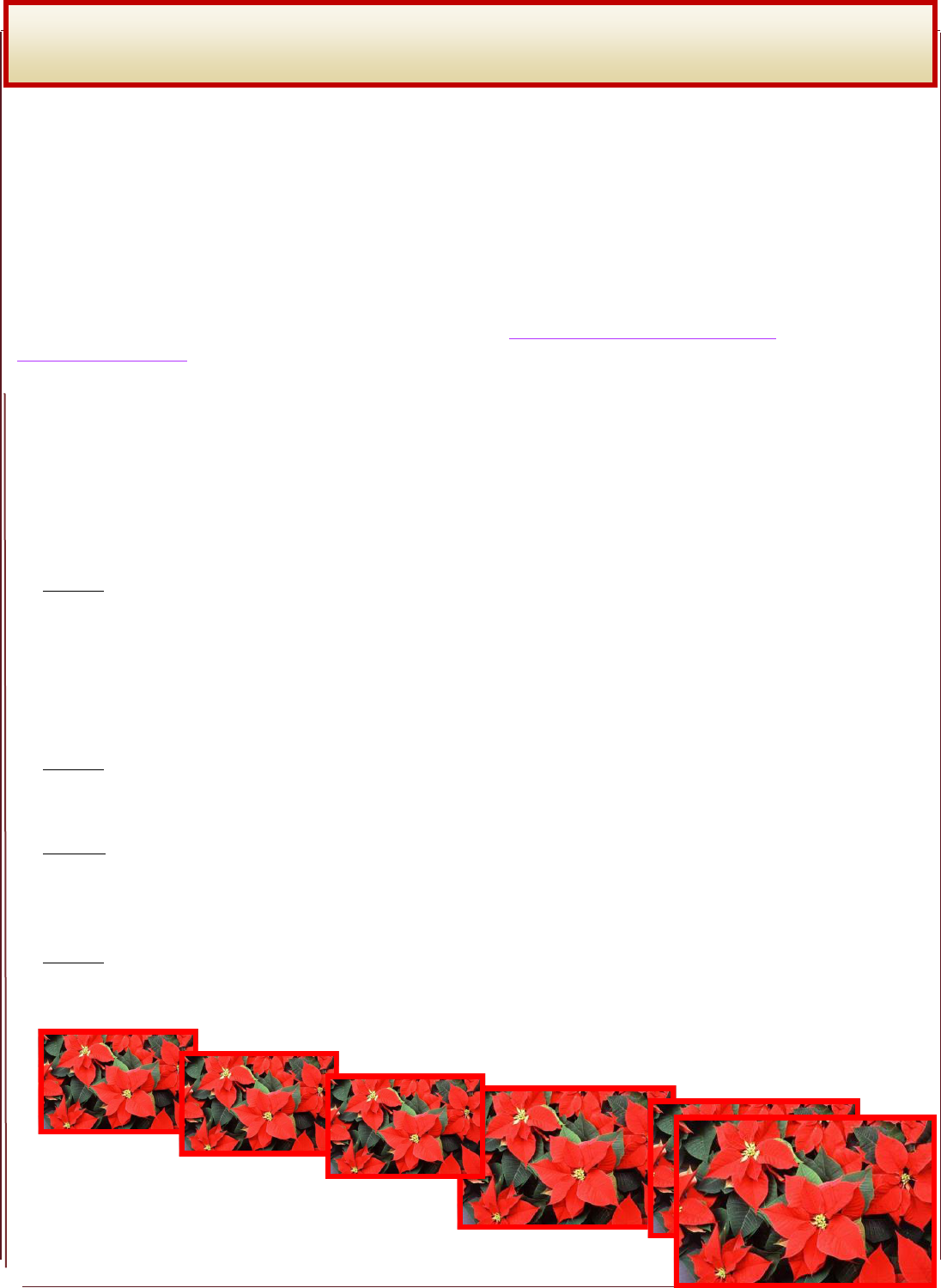
30 Volume 13: Issue 3 Fall/Winter 2022
Member News Column
What's Happening Now?
Every quarter we receive self-reported accomplishments by Fellows. In this issue we are proud to recog-
nize distinguished Fellows who contributed significantly to advance the field of healthcare and or the professional
role of nurse practitioners. The following have made contributions in the areas of practice, research, policy and/or
education.
We highlight self-reported accomplishments of our Fellows in our newsletter published quarterly. If you
would like to share newsworthy accomplishments please go to https://www.surveymonkey.com/r/
FAANPAchievements
You can gain access to this website 24/7 to submit your achievements for the newsletter.
Congratulations!
Amelie Hollier, FAANP
Honor: Dr. Amelie Hollier was named the 2022-2023 Outstanding Graduate of the University of
Louisiana at Lafayette. She was recognized with various lunches, dinners, and receptions. She was
presented at half time at the Homecoming Football game on October 1, 2022.
Mary B. Neiheisel, FAANP
Honor: The Mary B. Neiheisel Graduate NP Scholarship was established by a former student,
Tracy Frentz, and her husband Dr. Bryan Fritz. The Scholarship began in 2022 and continues in
perpetuity.
Award: Dr. Neiheisel received the first Dr. Mary Neiheisel Patron of Hope Award. The award was
established by Faith House of Acadiana to recognize and honor a person who has worked diligently
and consistently to assist survivors of domestic violence, in addition to serving as the NP for the
shelter and as a faithful and loyal volunteer.
Honor: Dr. Mary Neiheisel was selected to be a Member Emeritus of the Acadiana Center for the
Arts Board of Directors for long time service and patron of the Arts. She was recognized at a recep-
tion and the Pelican Ball in December, 2022.
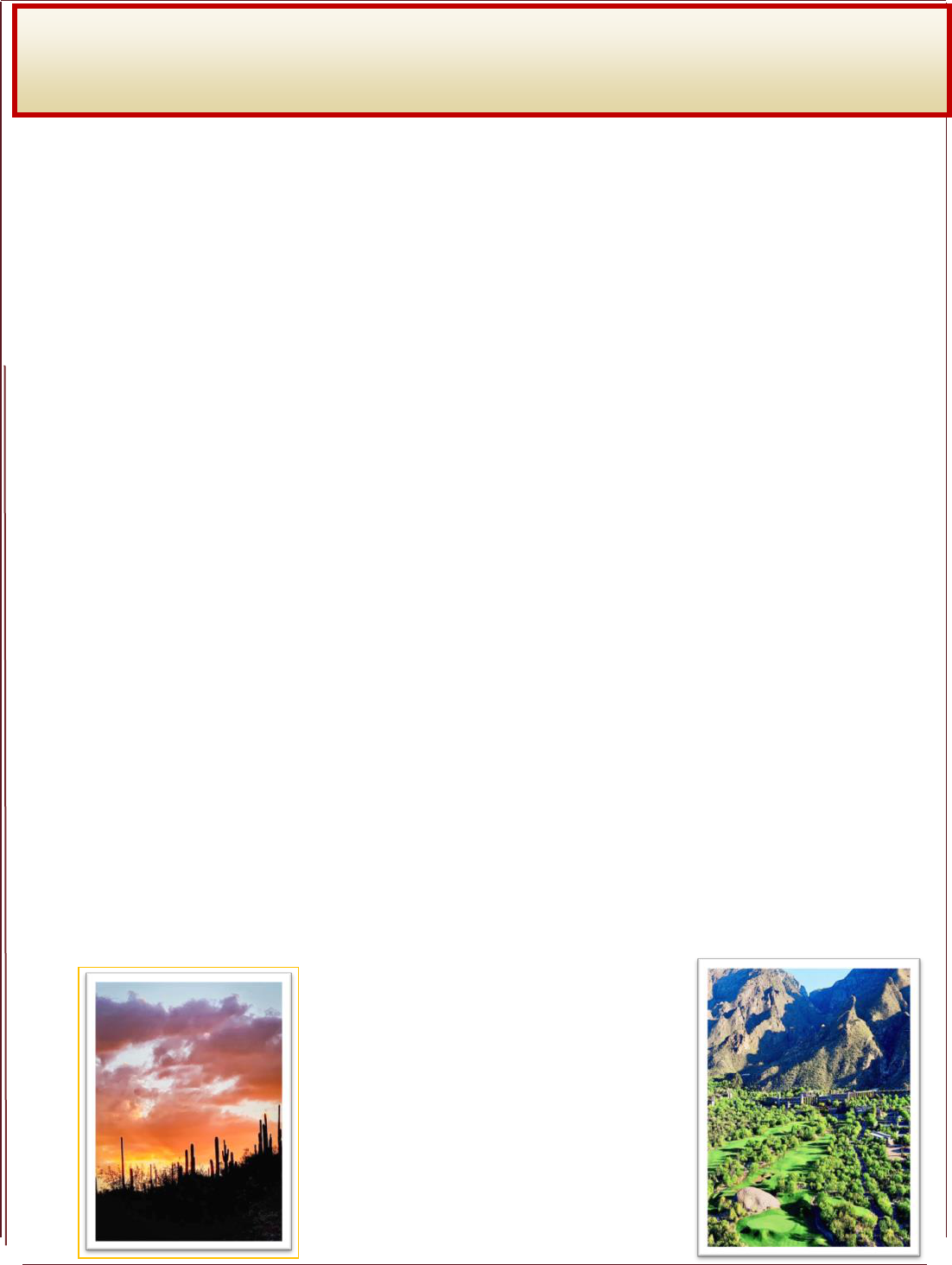
31 Volume 13: Issue 3 Fall/Winter 2022
FELLOWS WINTER MEETING
Navigating the Changing Face of Healthcare:
Emerging Models, Challenges, and Strategies
Fellows Winter Meeting
Loews Ventana Resort, Tucson AZ
Saturday, February 25, 2023
Continental Breakfast
Networking
Welcome
Penny Kaye Jensen, DNP, FNP-C, FAAN, FAANP, FNAP
Patricia Pearce, MPH, PhD, FNP-BC, FAANP, FNAP
MaryJo Goolsby, EdD, MSN, NP-C, FAANP
Nurse Practitioner Advocacy: The Port in the Storm
Loretta Ford Keynote
William Rosa, PhD, MBE, NP-BC, FAANP, FAAN
2022 LFA Award winner
Microeconomics of Health Care: Efficiency, Effectiveness, and Market Performance Jeff Bauer, PhD,
FAANP(H)
Workforce – Now & Future
Peter Buerhaus, PhD, RN, FAAN, FAANP(H)
Lunch & AANP Update
Legal issues – Changing Landscape
Barbara Safriet, JD, LLM, FAANP(H)
Leading the Nation’s Largest Nursing Workforce
Cathy Rick, RN, NEA-BC, FAAN, FAANP(H)
Healthcare Transformation – The Next Generation of Telehealth Christine Engstrom, PhD, CRNP,
AOCN, FAANP
Break
Speaker Panel Q&A
Call to action/Discussion
Wrap up & Adjourn
Thank you to our
Leaders and our
Honorary fellows for
this awesome meeting.
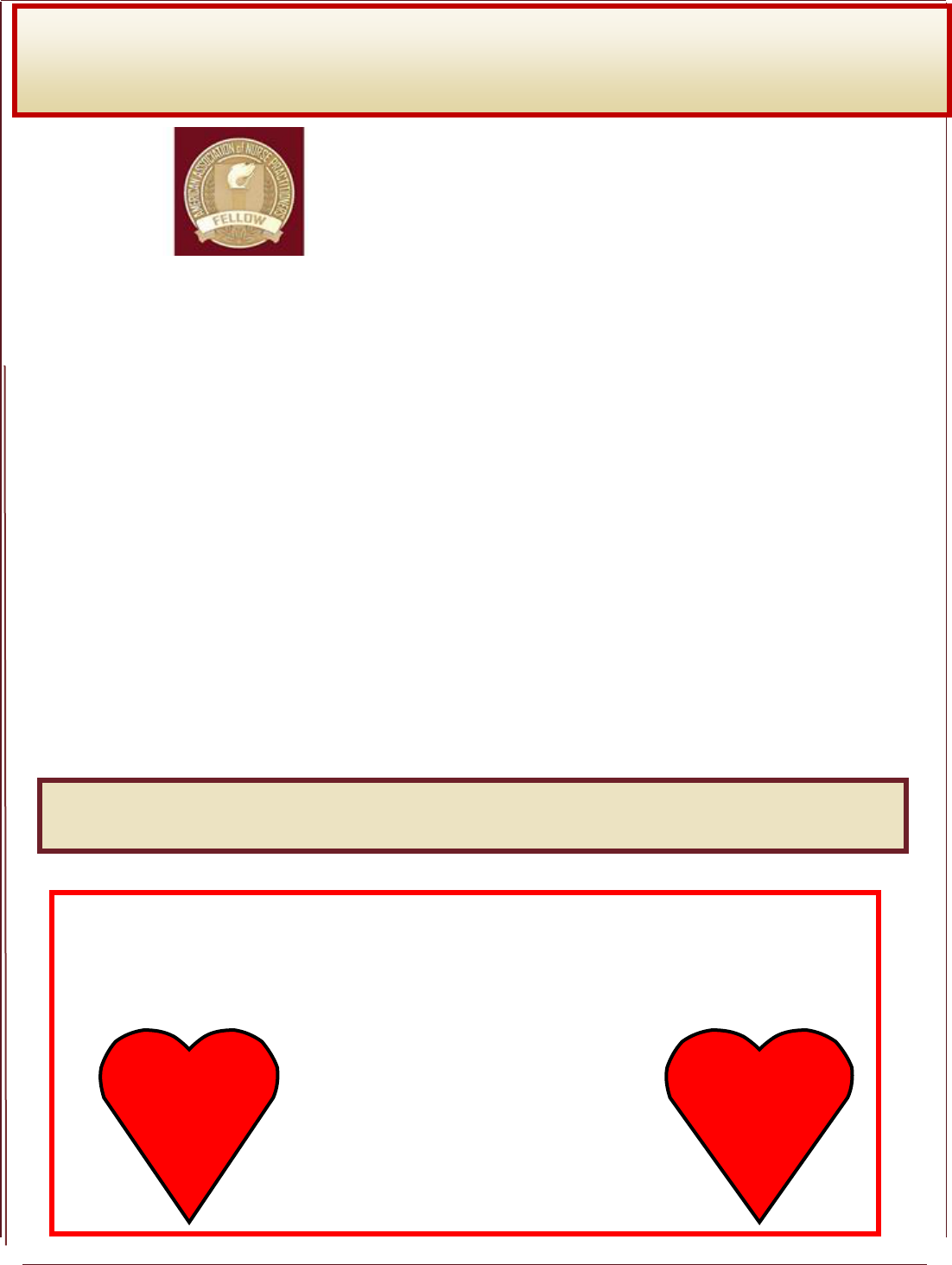
32 Volume 13: Issue 3 Fall/Winter 2022
ANNOUNCEMENTS
Kim Curry, FAANP
“The Fellows Speak” is a recurring special feature of JAANP. Each column, written by an AANP Fellow,
informs readers of: issues, trends, and factors impacting the NP role, professional responsibilities and related
strategies to promote stewardship of the NP role.
This broad purpose provides opportunities for Fellows to share their reflections on current issues, in-
formed by their experiences, knowledge and expertise. Manuscripts should provide thoughtful, scholarly discus-
sions of topics with informed and/or opinion of their topic.
Manuscripts are limited to approximately 1500 words and nine references. They are submitted through
the JAANP Authors Submission Site. In order for a manuscript to be considered as a Fellows Column, authors
must select “The Fellows Speak” as the manuscript type during submission.
Questions can be referred to the column co-editors:
Elayne DeSimone, co-editor
Patricia Pearce, co-editor
Call for Papers: JAANP Fellows Column
Reminders
FAANP would like to acknowledge Fellows who are ill or who need a word or
words from FAANP. Please, notify Diane Padden (dpadden@aanp.org) or
Jennifer Murray (jmurray@aanp.org)
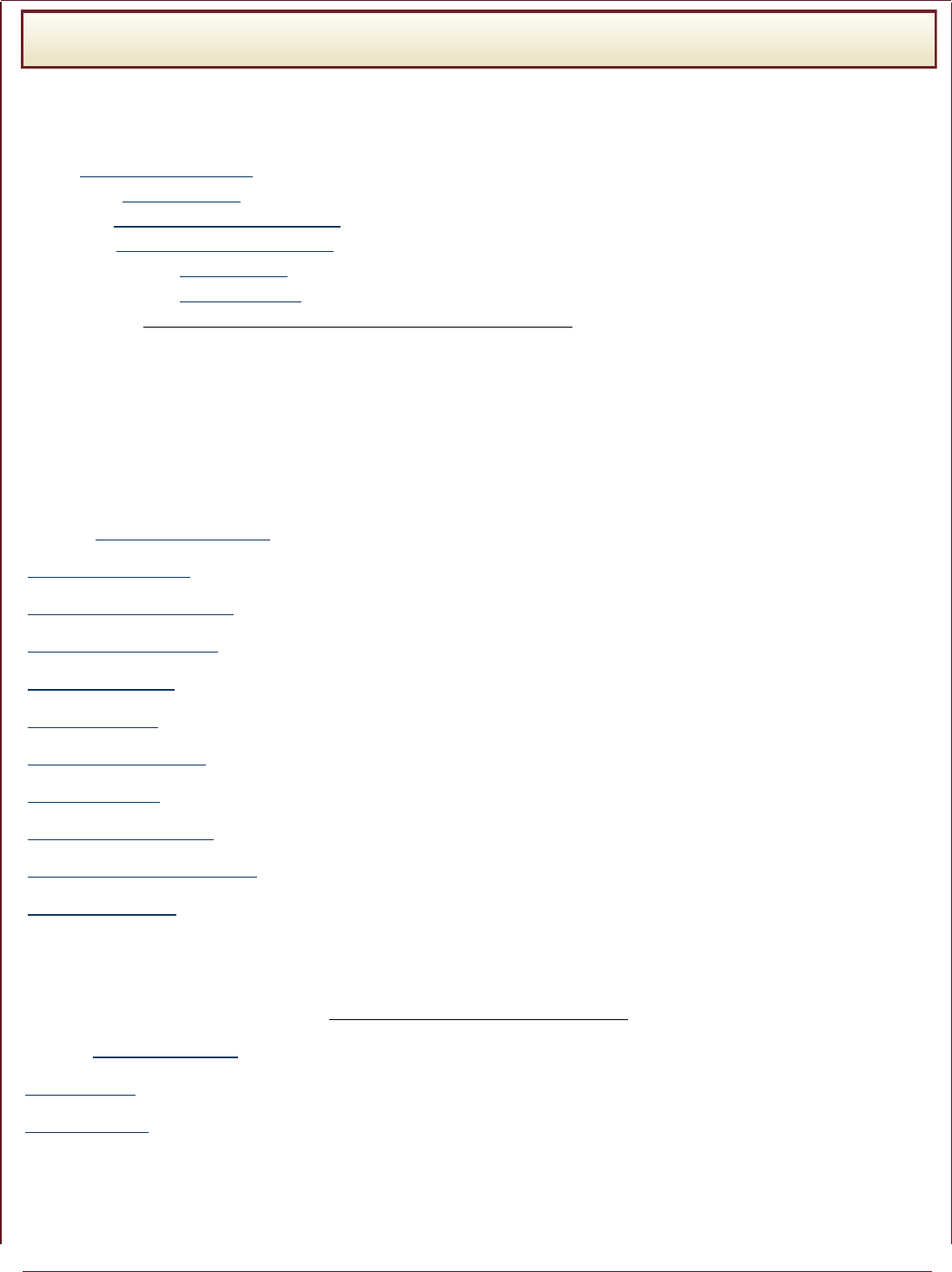
33 Volume 13: Issue 3 Fall/Winter 2022
FAANP OFFICERS AND COMMITTEES
Executive Committee
Chair: Penny Kaye Jensen, DNP, FNP-C, FAAN, FAANP
Past Chair: Diane Seibert, PhD, CRNP, FAAN, FAANP
Secretary: Johnnie Sue Wijewardane, Ph.D., FNP-BC, FAANP
Treasurer: Jamille Nagtalon Ramos, EdD, MSN, WHNP-BC, IBCLC, FAANP
Member at Large: Tracy Hicks, DNP, FNP-BC, PMHNP-BC, CARN-AP, FIAAN, FAANP
Member at Large: Elda Ramirez, PhD, RN, FNP-BC, ENP-C, FAEN, FAANP, FAAN
BOD Liaison: Richard Ricciardi, PhD, CRNP, FAANP, FAAN
Selection Committee
Chair – Kahlil Demonbreun, DNP, RNC-OB, WHNP-BC, ANP-BC, FAANP, FAAN
Terri Lynn Allison, DNP, ACNP-BC, FAANP
Michelle A. Beauchesne, DNSc, RN, CPNP, FAAN, FNAP, FAANP
Kathleen S. Burkhart, MSN, APN-c, FAANP
Kristene Diggins, DNP, MBA, DCC, CNE, FAANP
Catherine Ling, PhD, FNP-BC, FAANP
Honey Mone't Jones, DNP, ACNP-BC, FAANP
Alison Mitchell, APRN, MSN, ACNP-BC, FAANP
George Peraza-Smith, DNP, APRN, GNP-BC, AGPCNP-C, GS-C, CNE, FAANP
Vanessa Pomarico-Denino, Ed.D, FNP-BC, FAANP
Joan E. Zaccardi, DrNP, APN-BC, FAANP
Nomination Committee
Chair – Veronica Wilbur, PhD, APRN-FNP, CNE, FAANP
Kate Gawlik, DNP, RN, APRN-CNP, FAANP
Kevin Ballard, DNP, FNP, FAANP

34 Volume 13: Issue 3 Fall/Winter 2022
Team Member
Column Assignment Contact Information
Patricia T. Alpert Member News [email protected]
Jamesetta A. Newland Education [email protected]
Barbara Sheer History [email protected]
Kathy Wheeler
Policy [email protected]
Newsletter Team and Contact Information
We welcome contributions from our members for the Forum. Please, send your topics to
Mary B. Neiheisel at [email protected]
Do you have an achievement you would like to share with us?
We highlight self-reported accomplishments of our fellows in our newsletter published quarterly. If you
would like to share newsworthy accomplishments please go to URL: https://www.surveymonkey.com/r/
FAANPAchievements Your accomplishments will appear in the Forum, our fellow’s newsletter. (Note: we
reserve the right to edit your entry to conform to allotted space).
